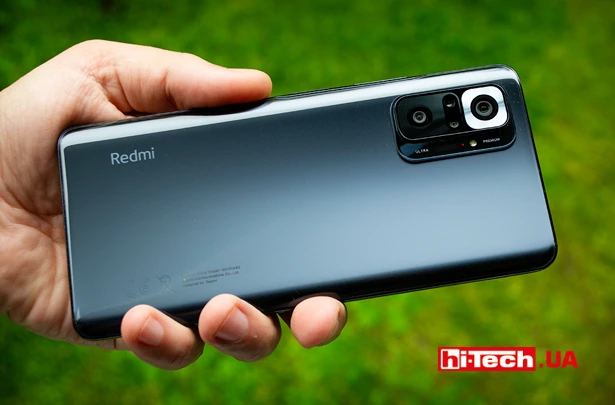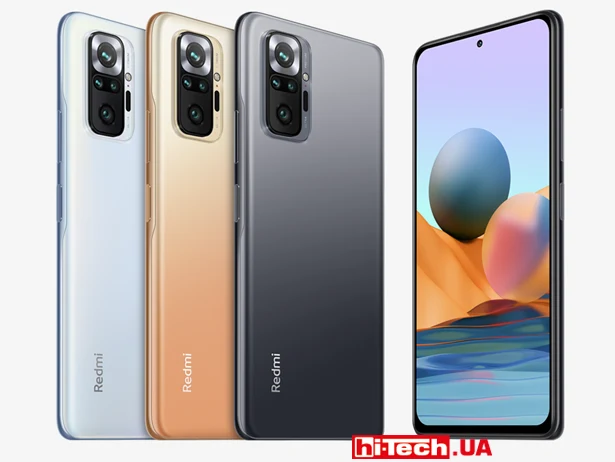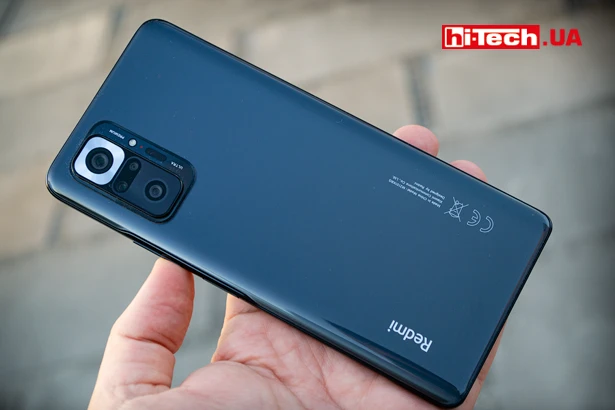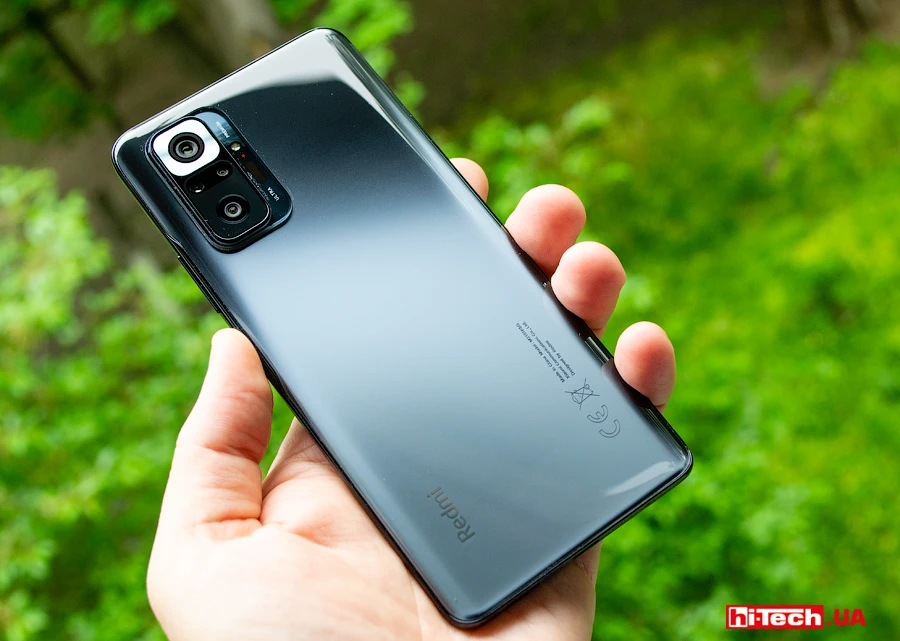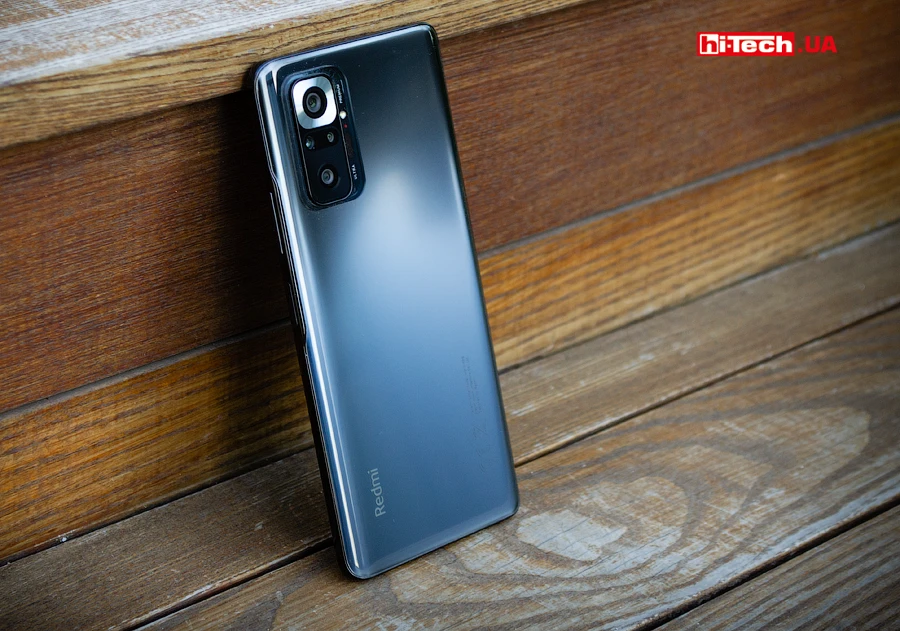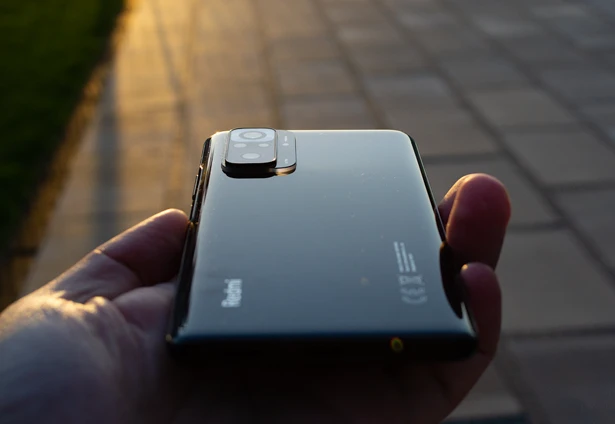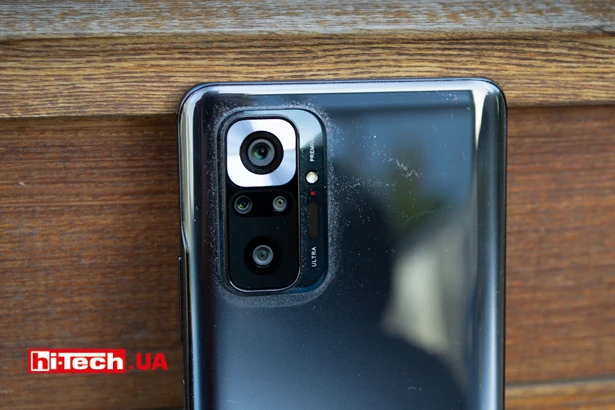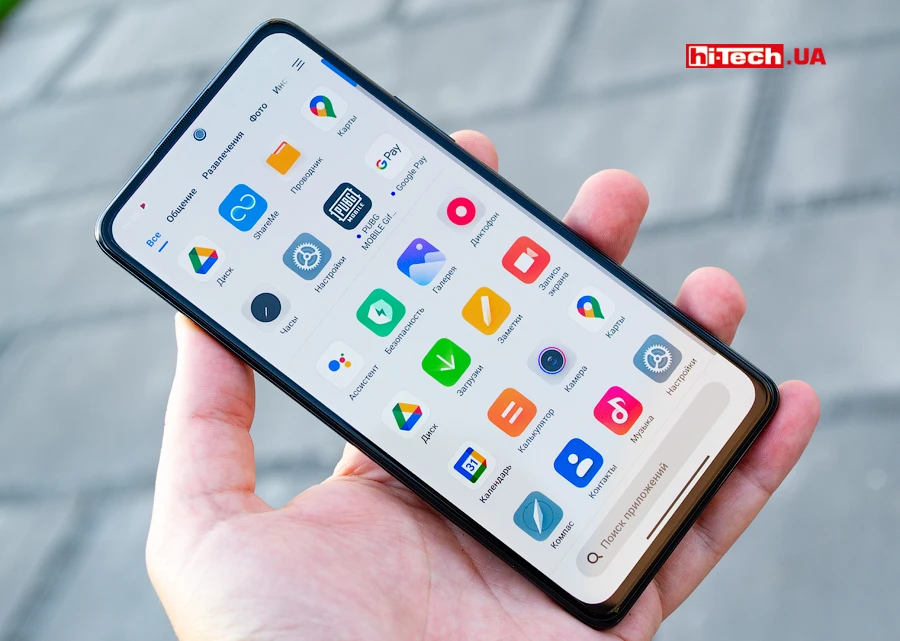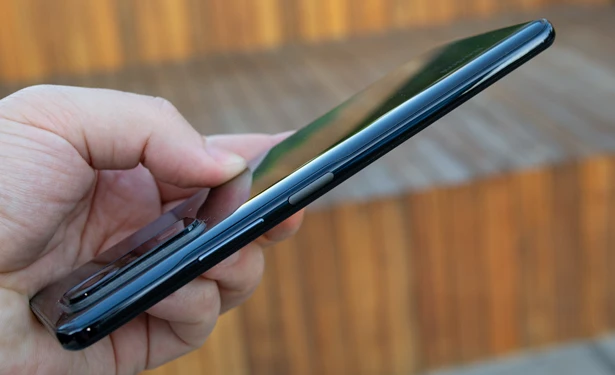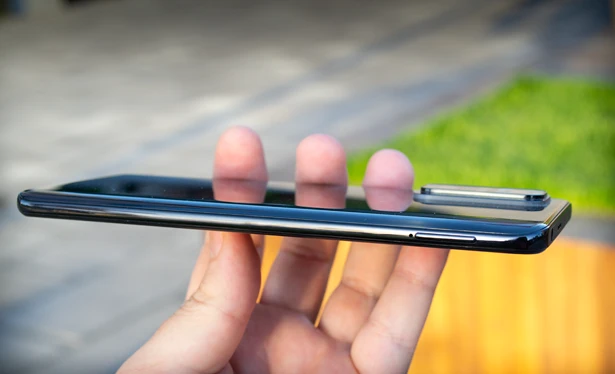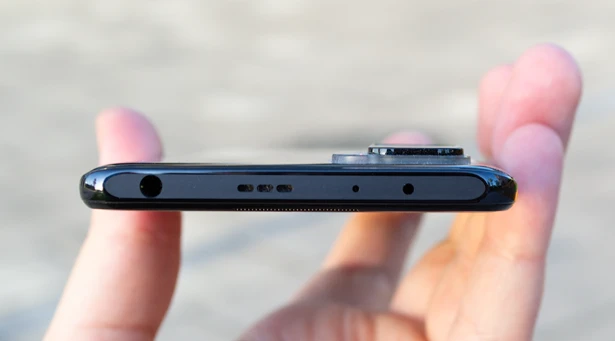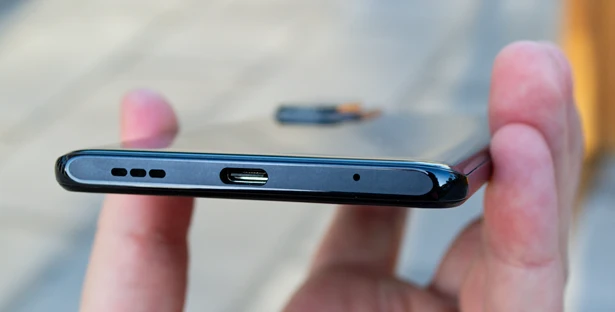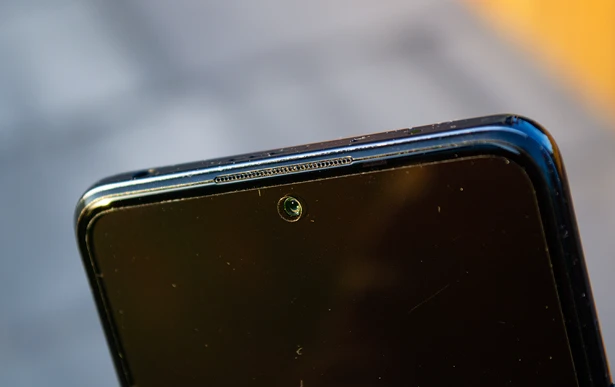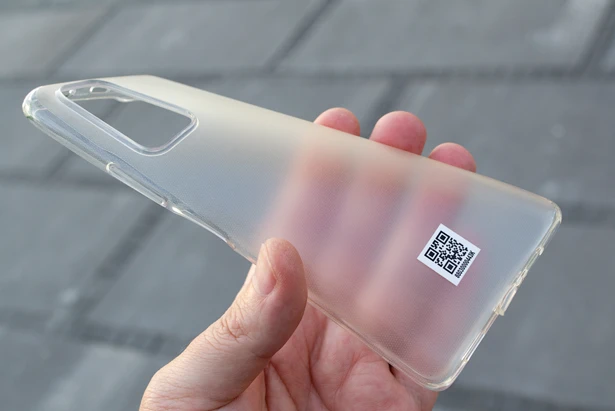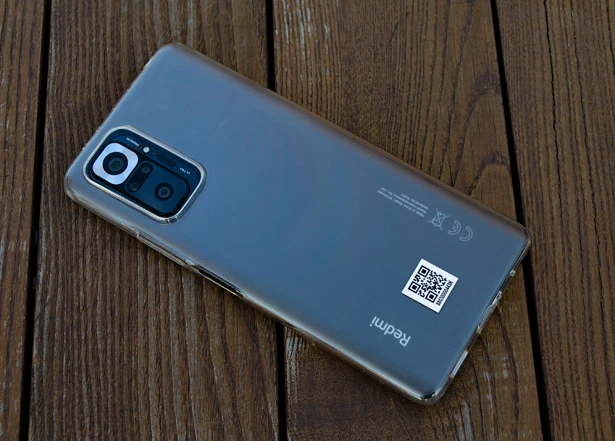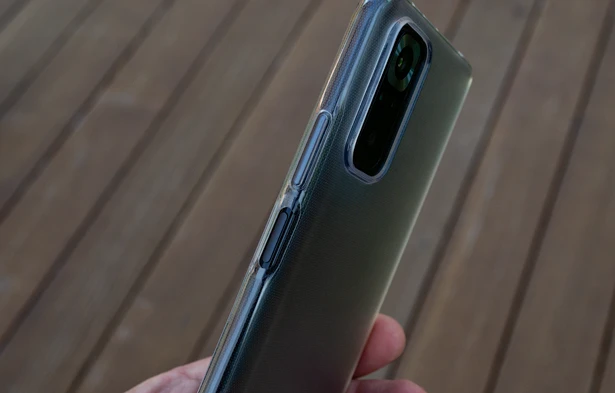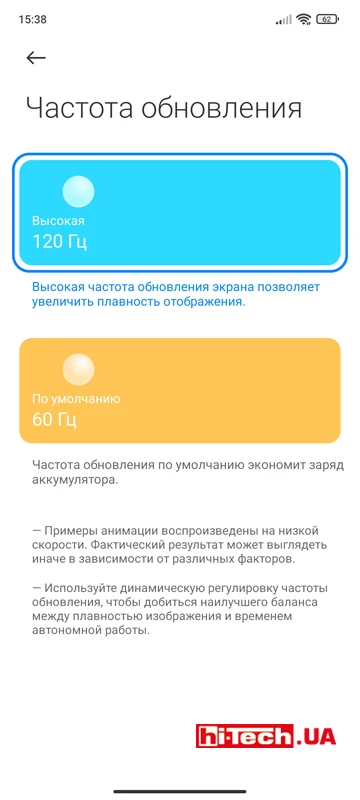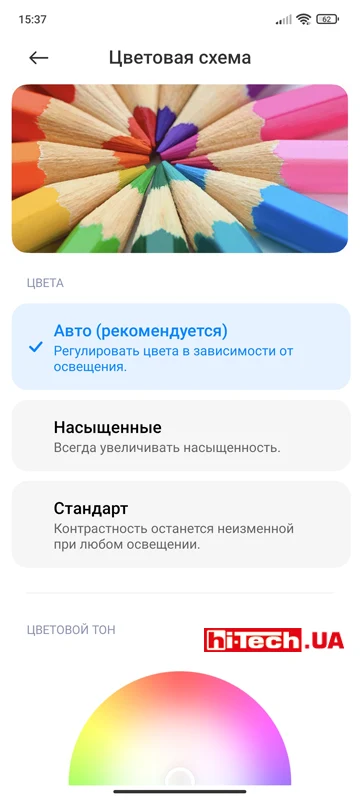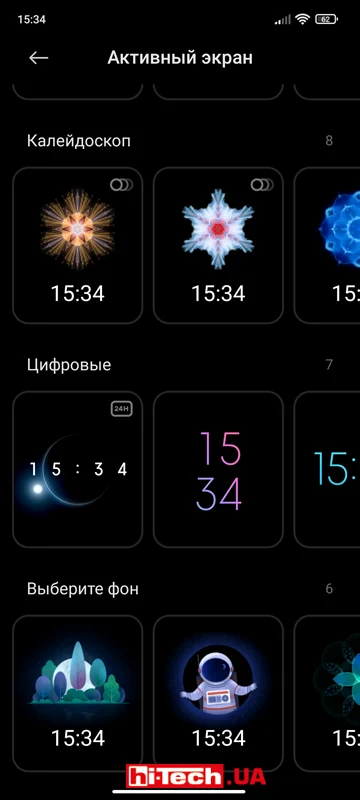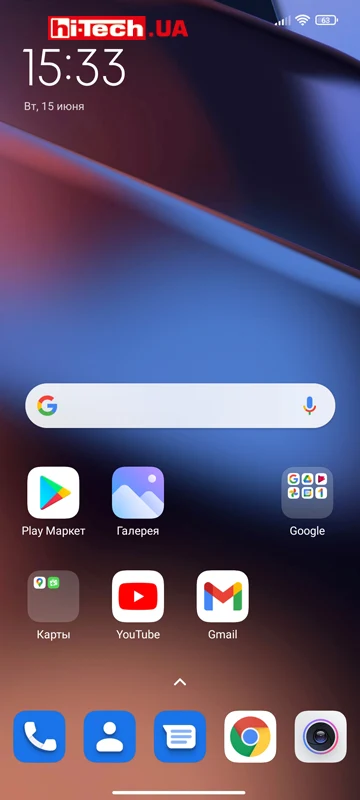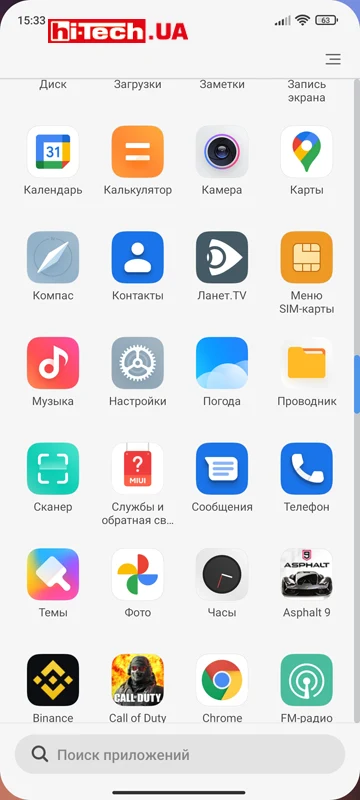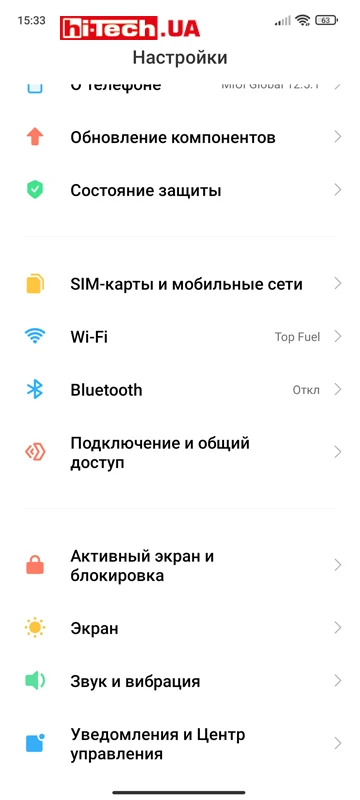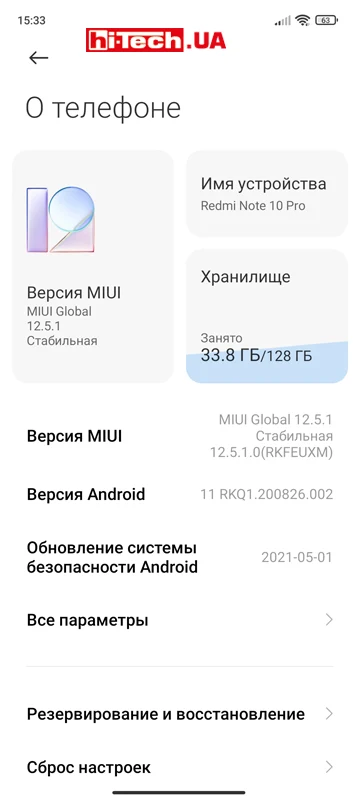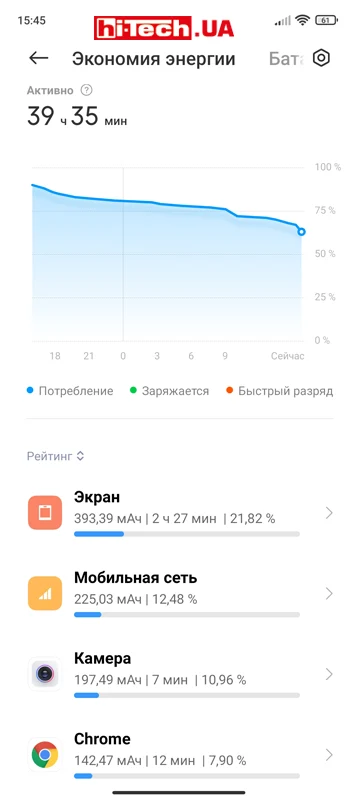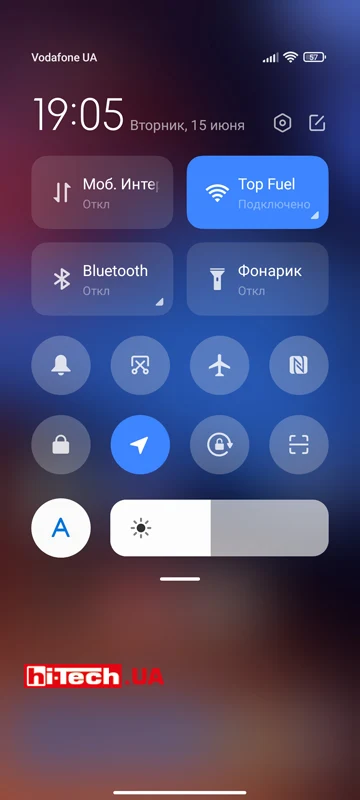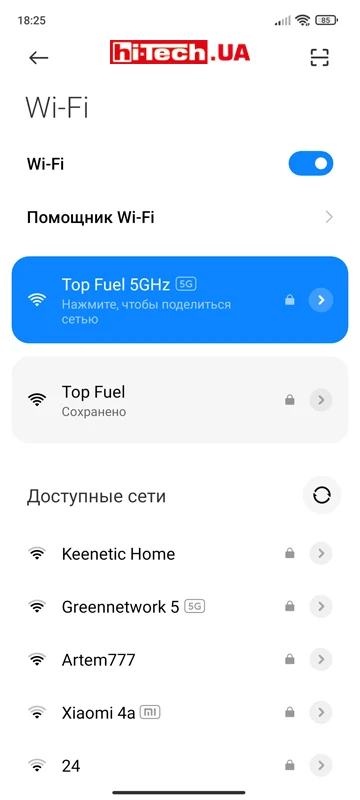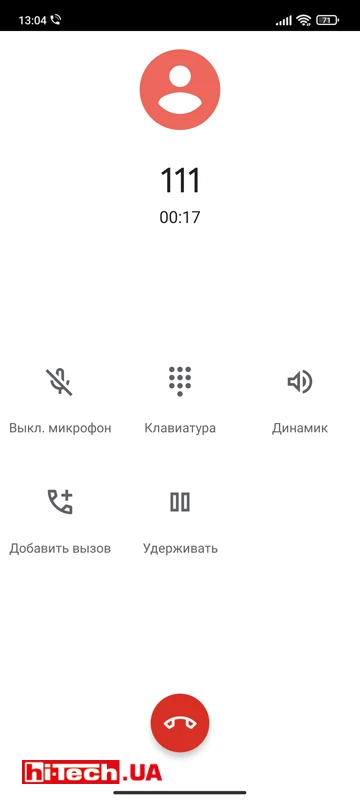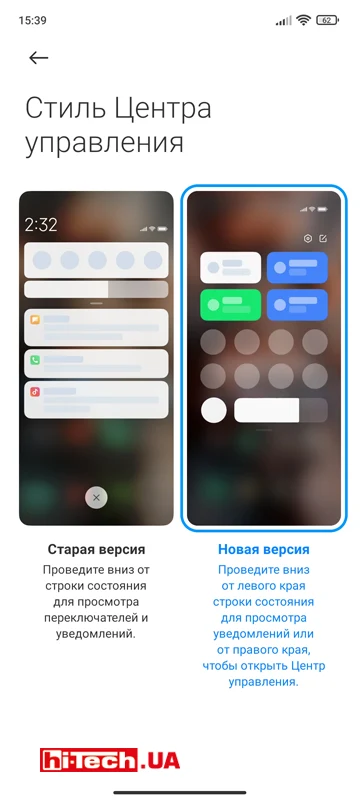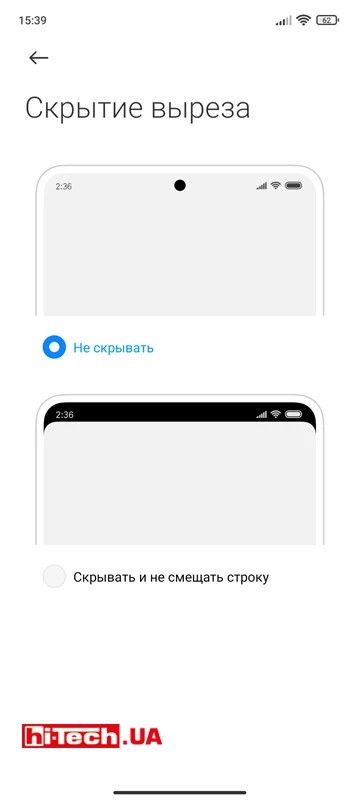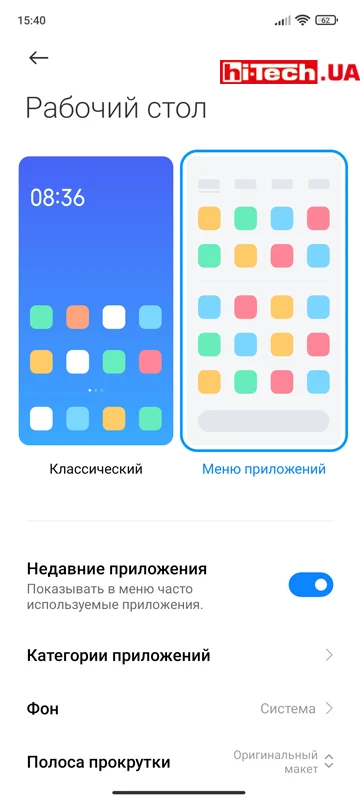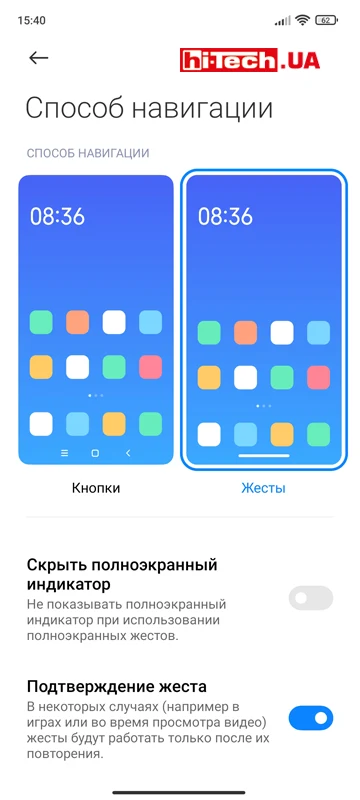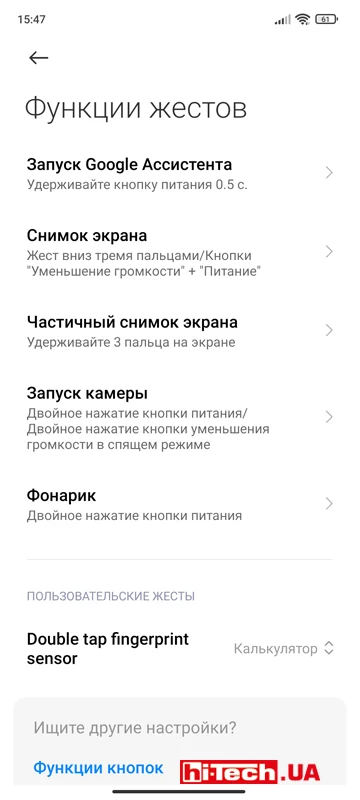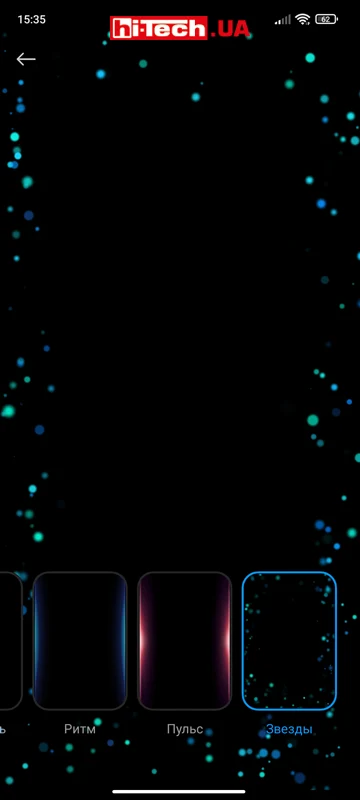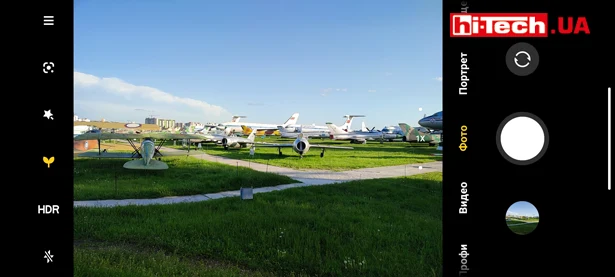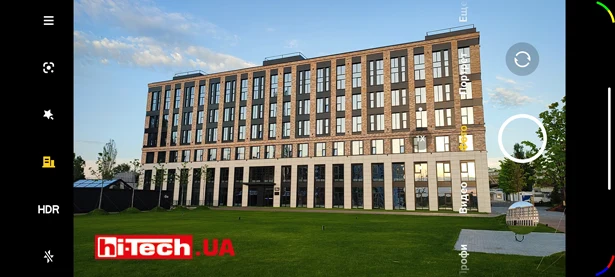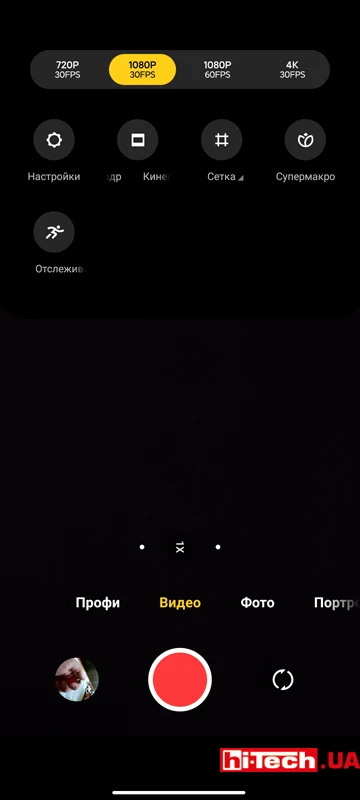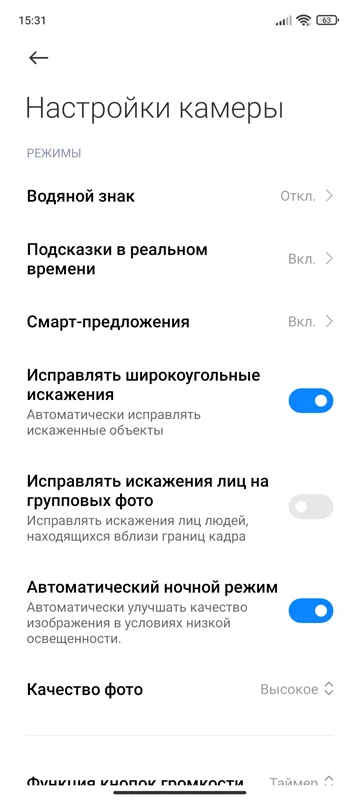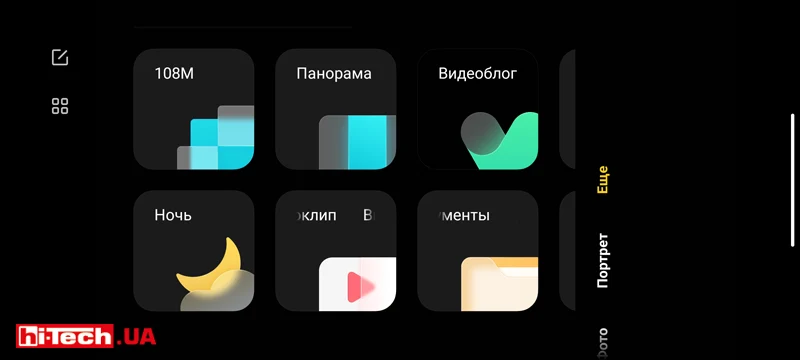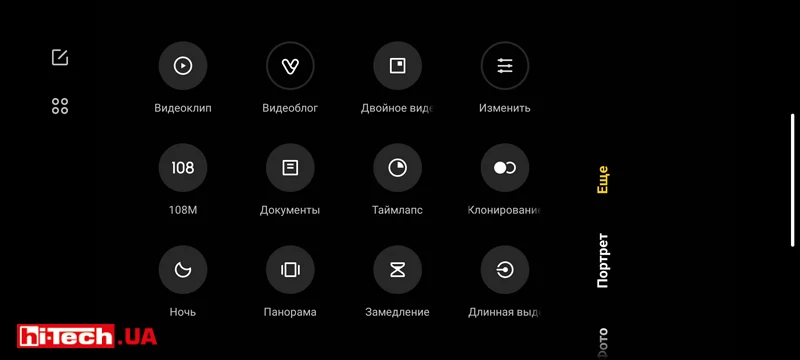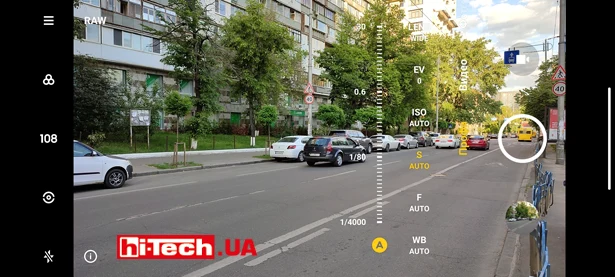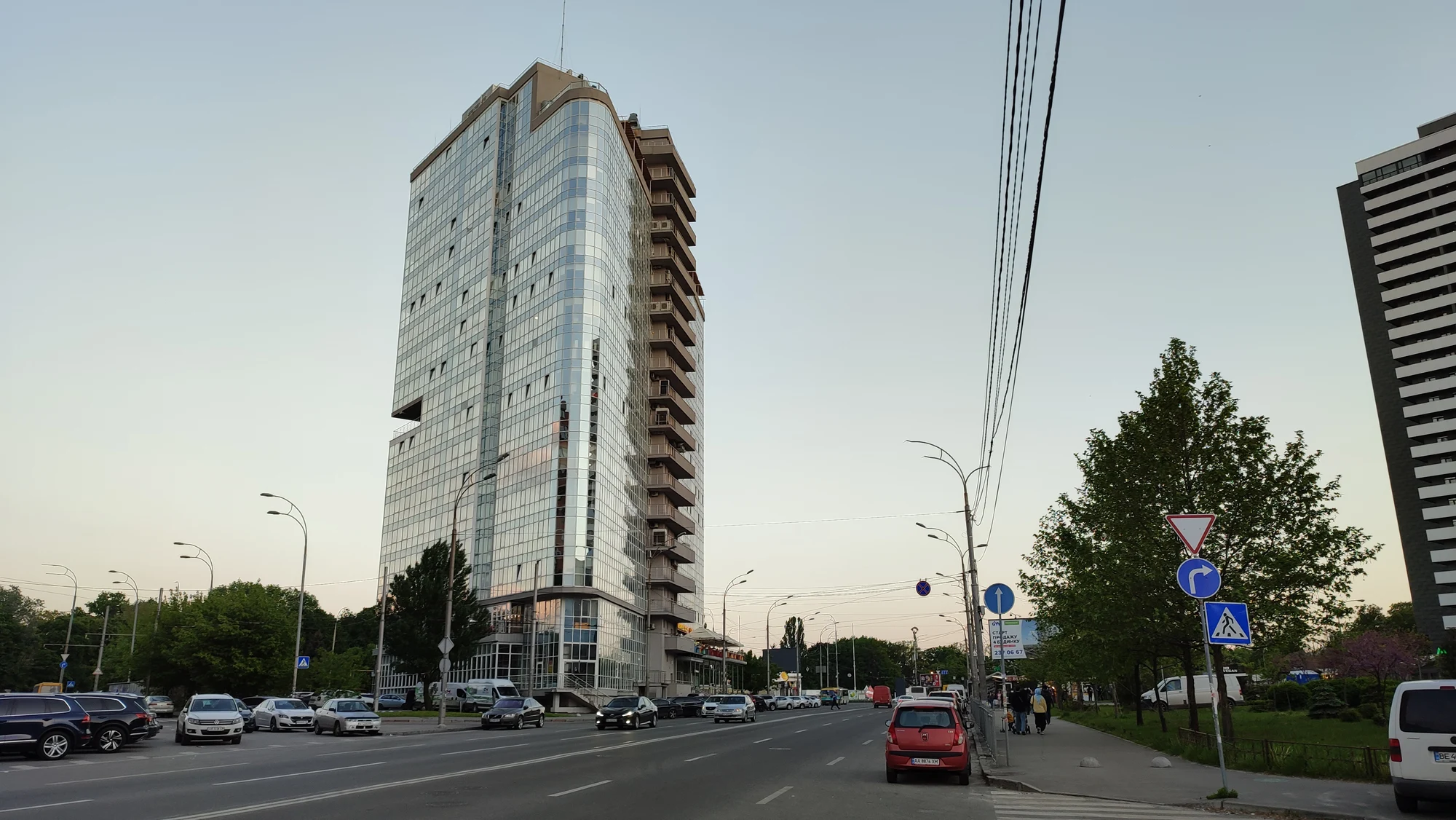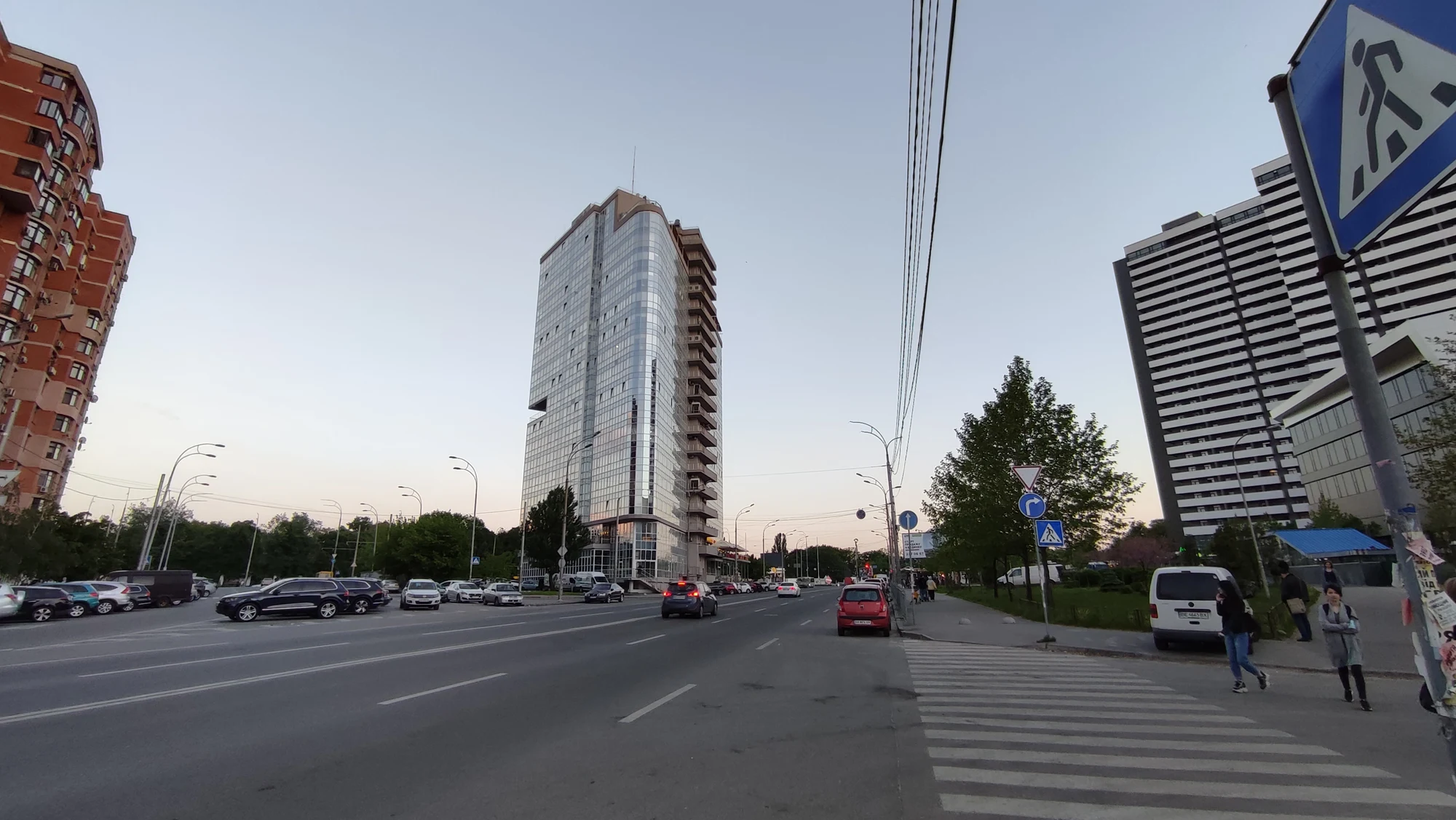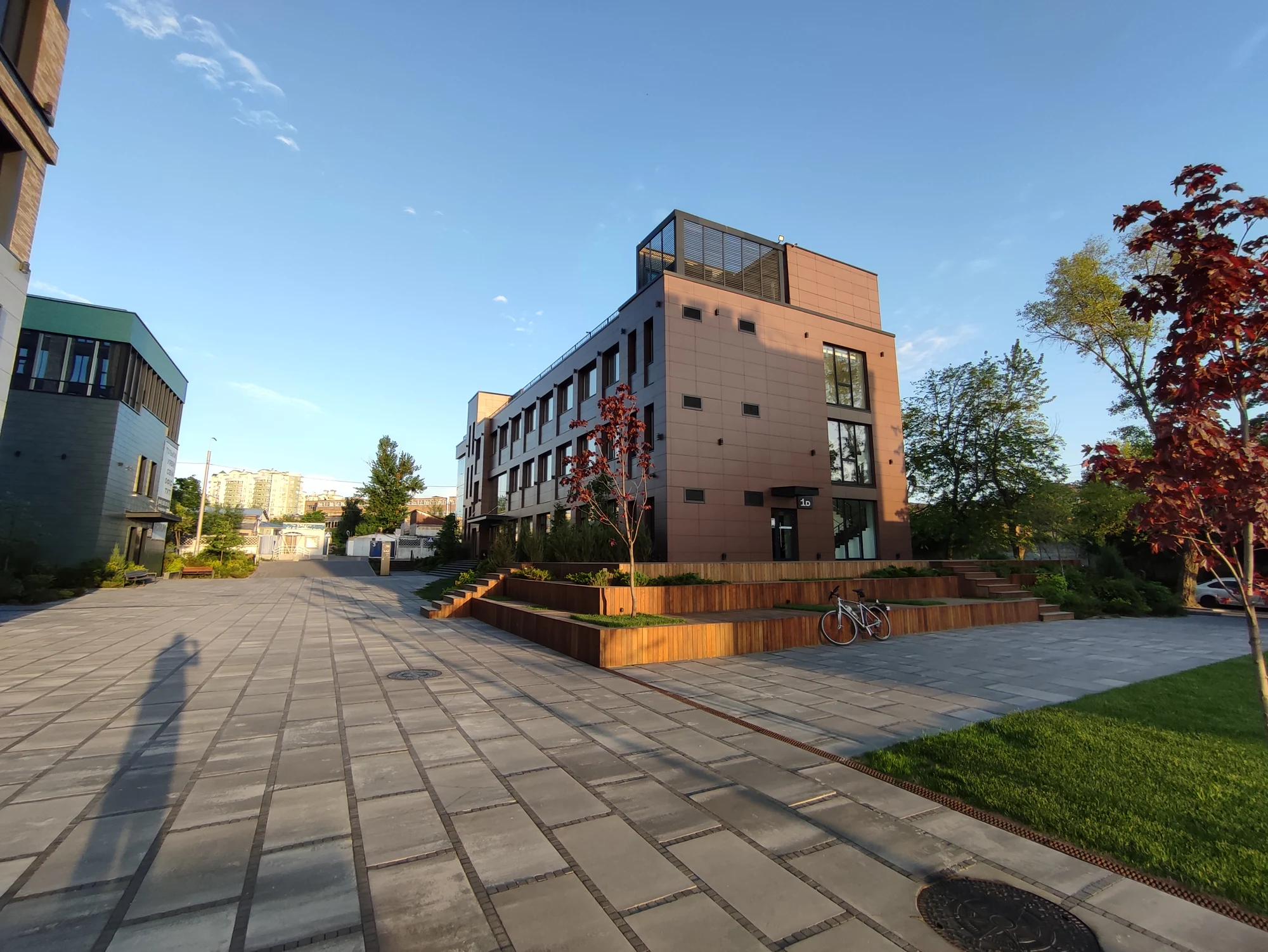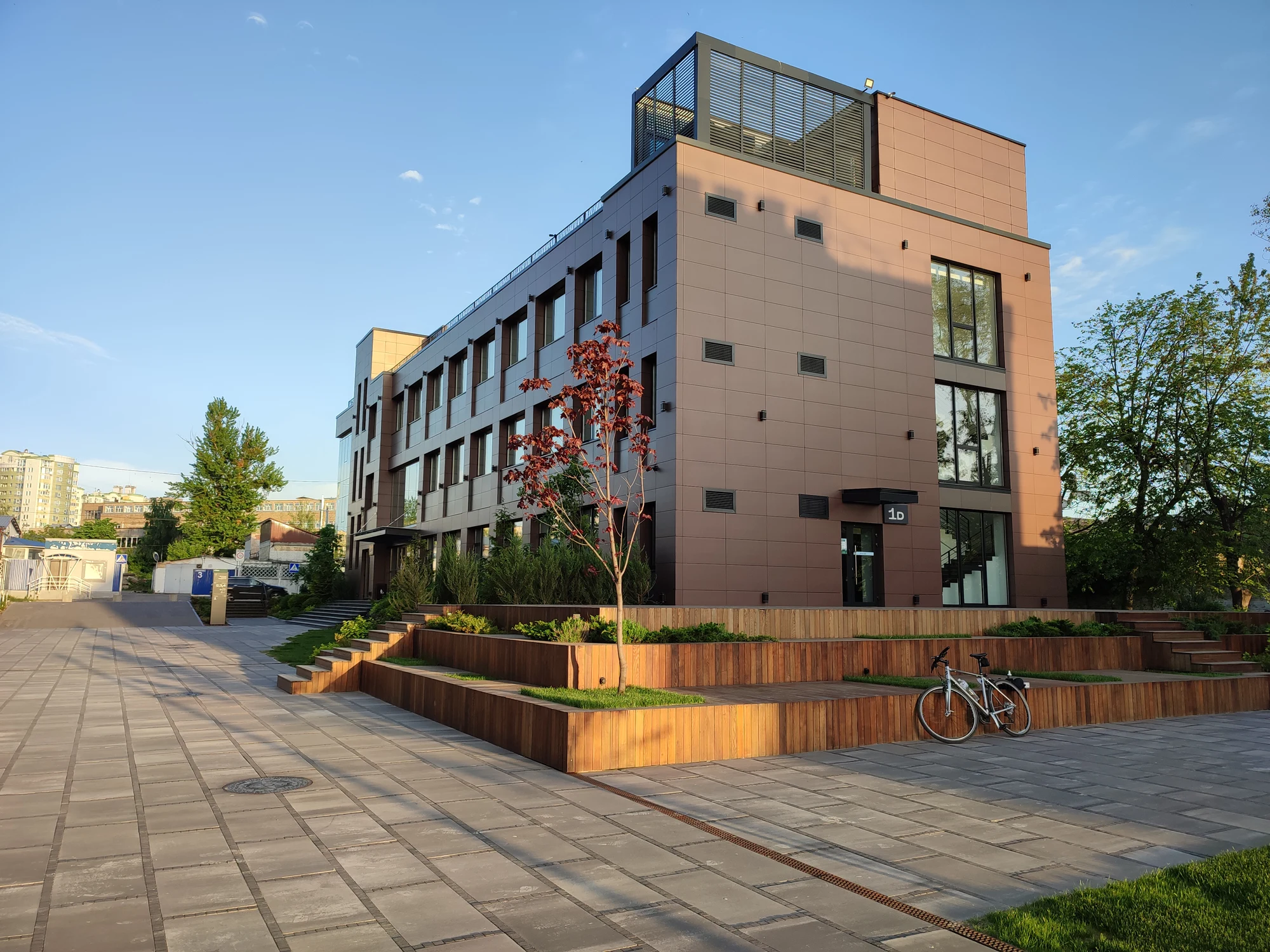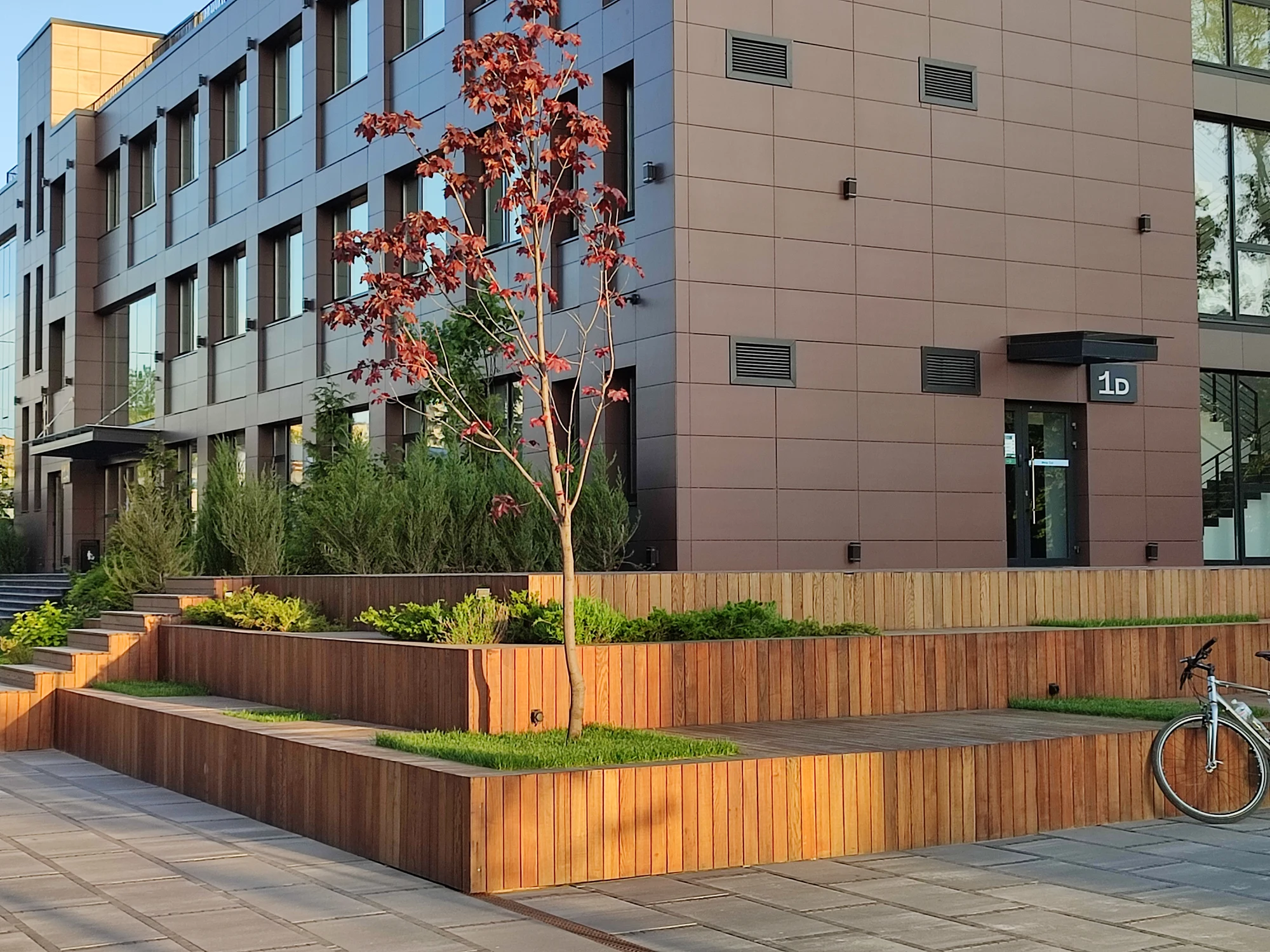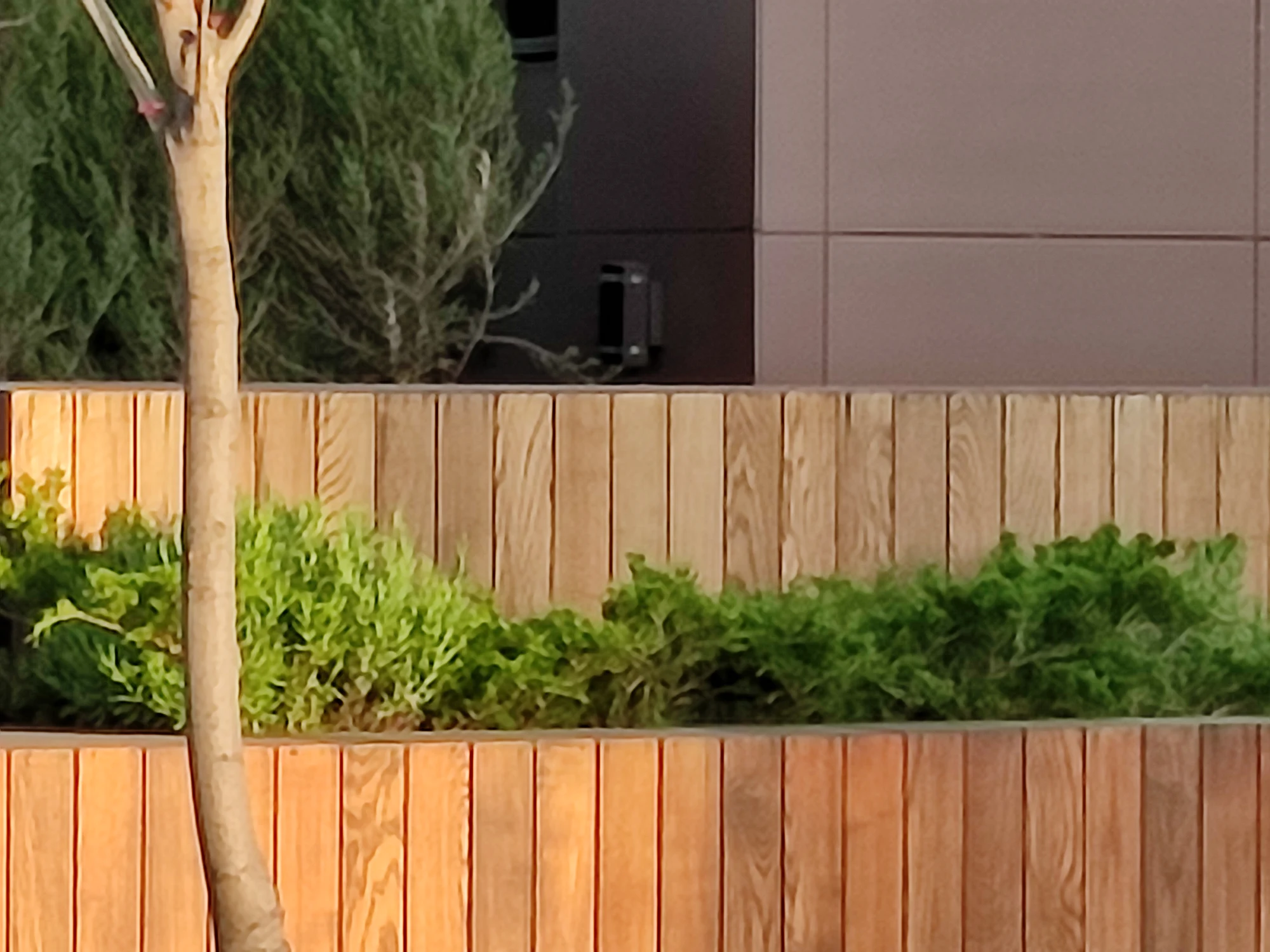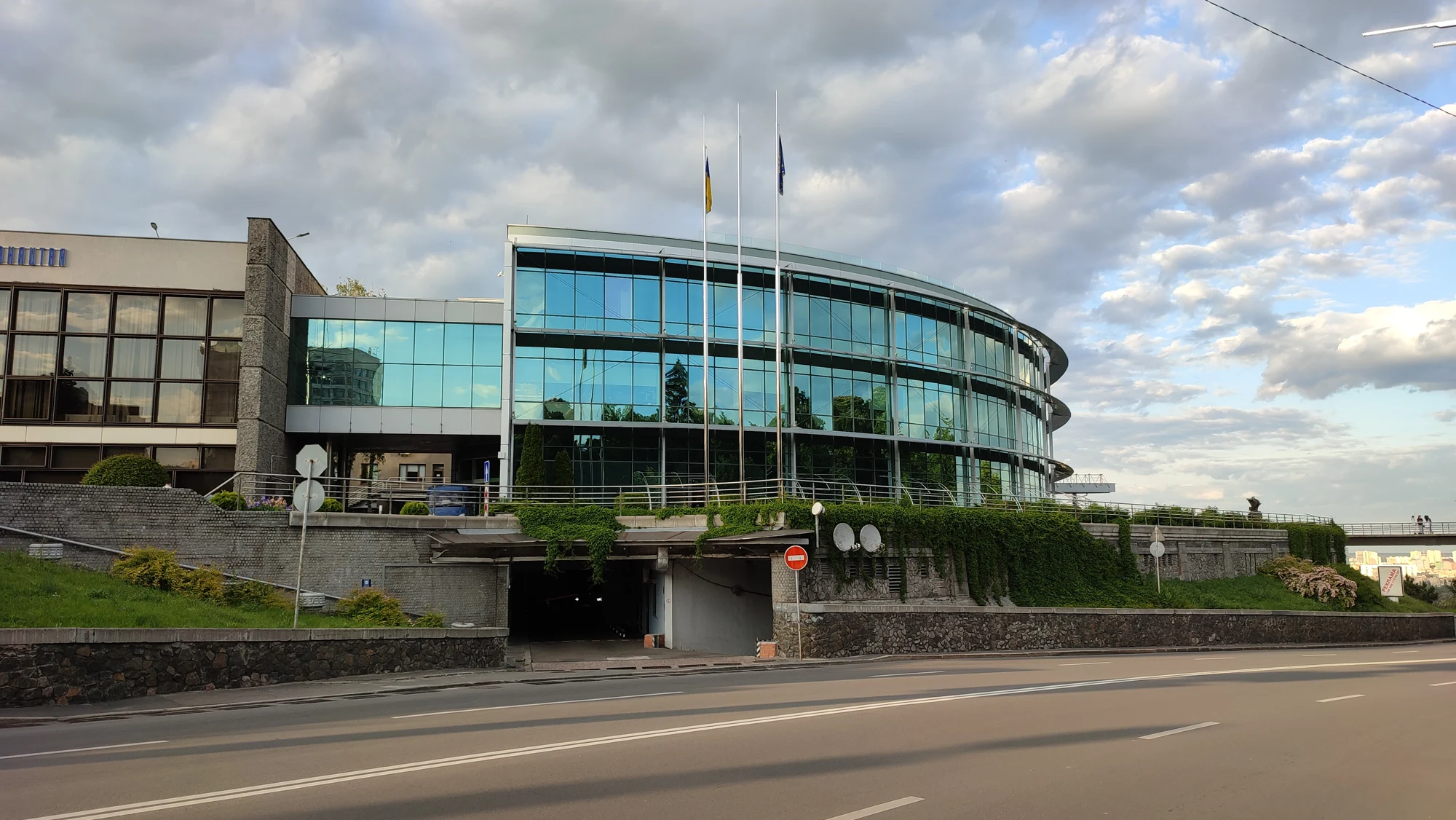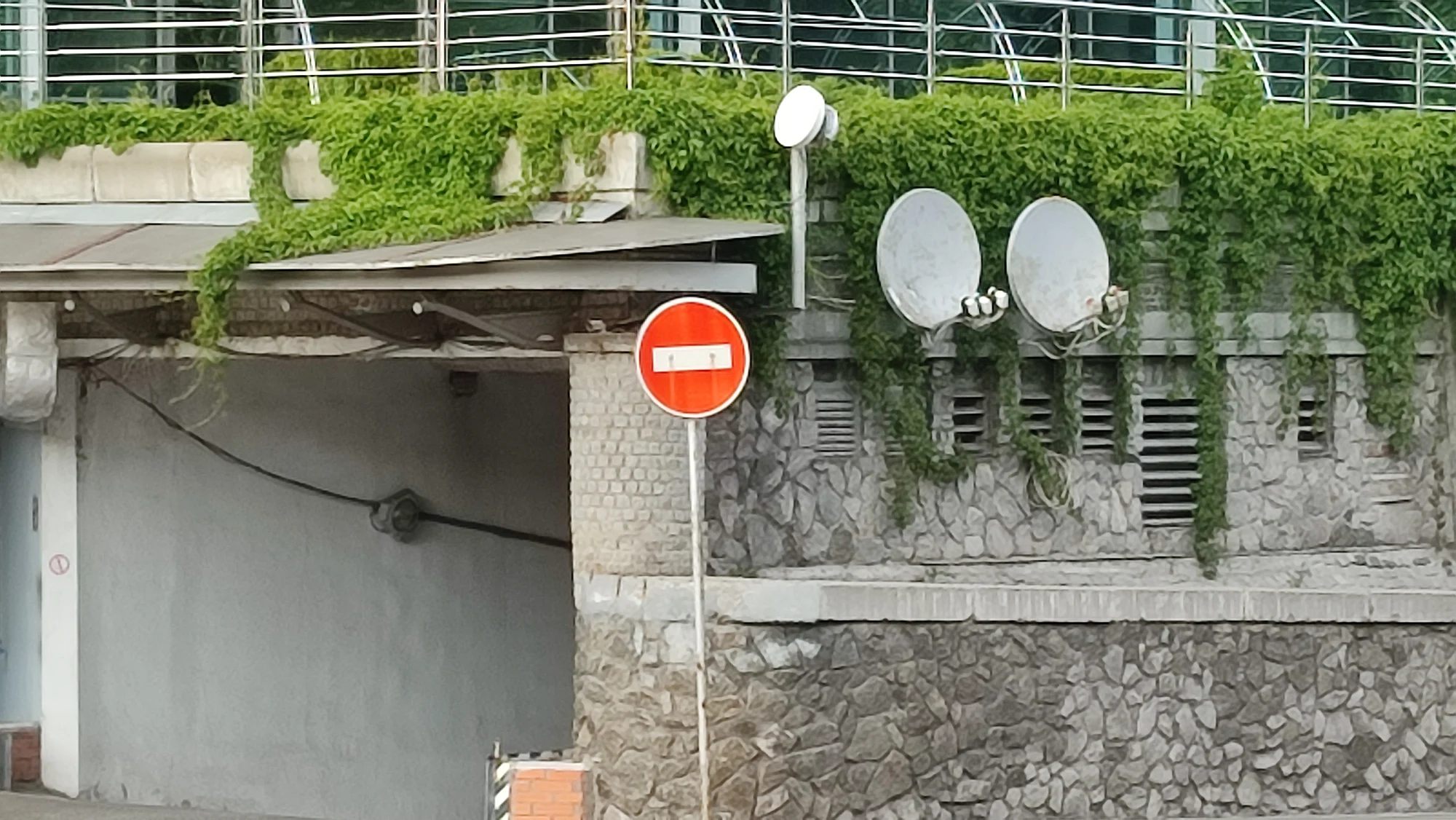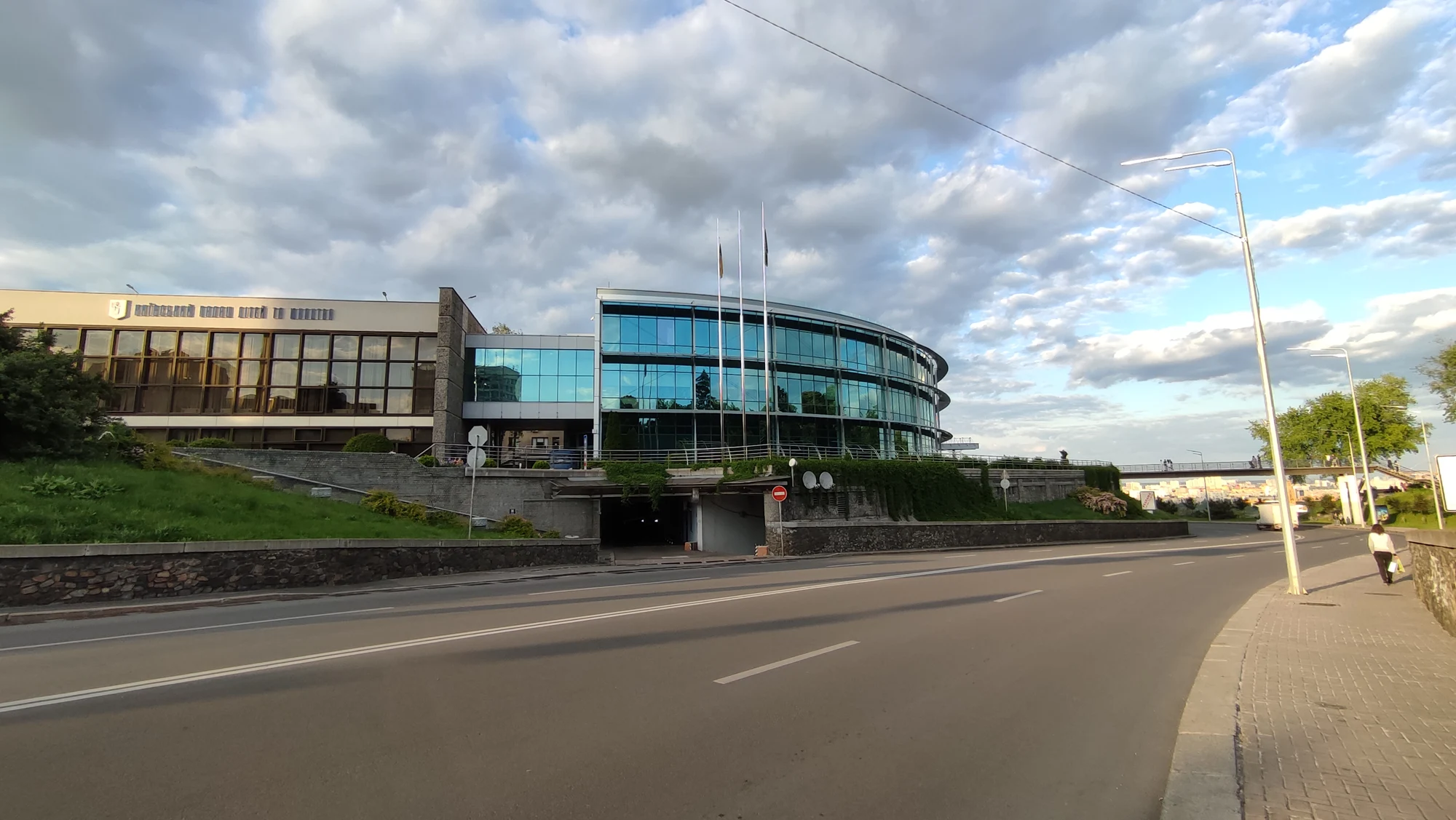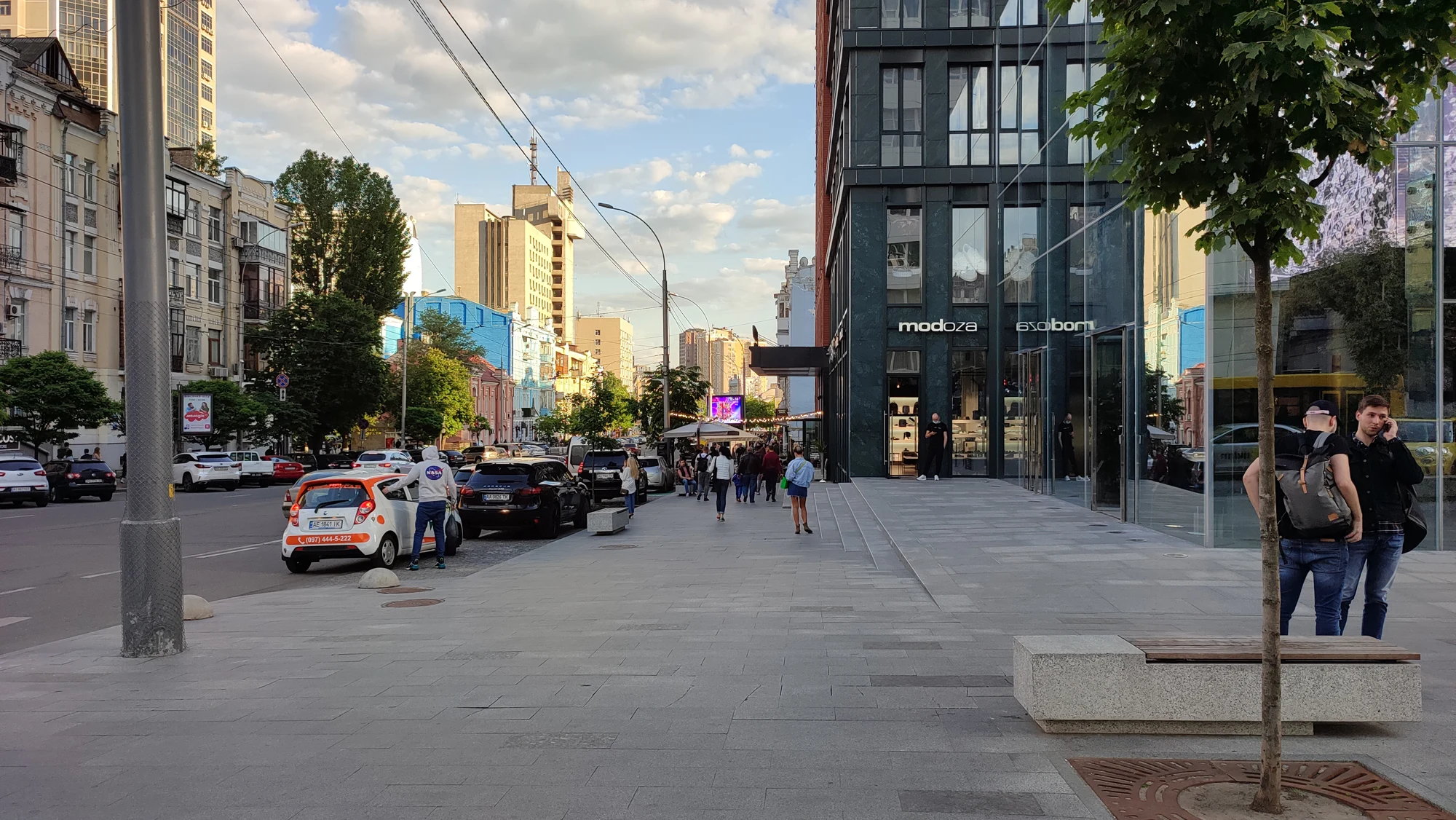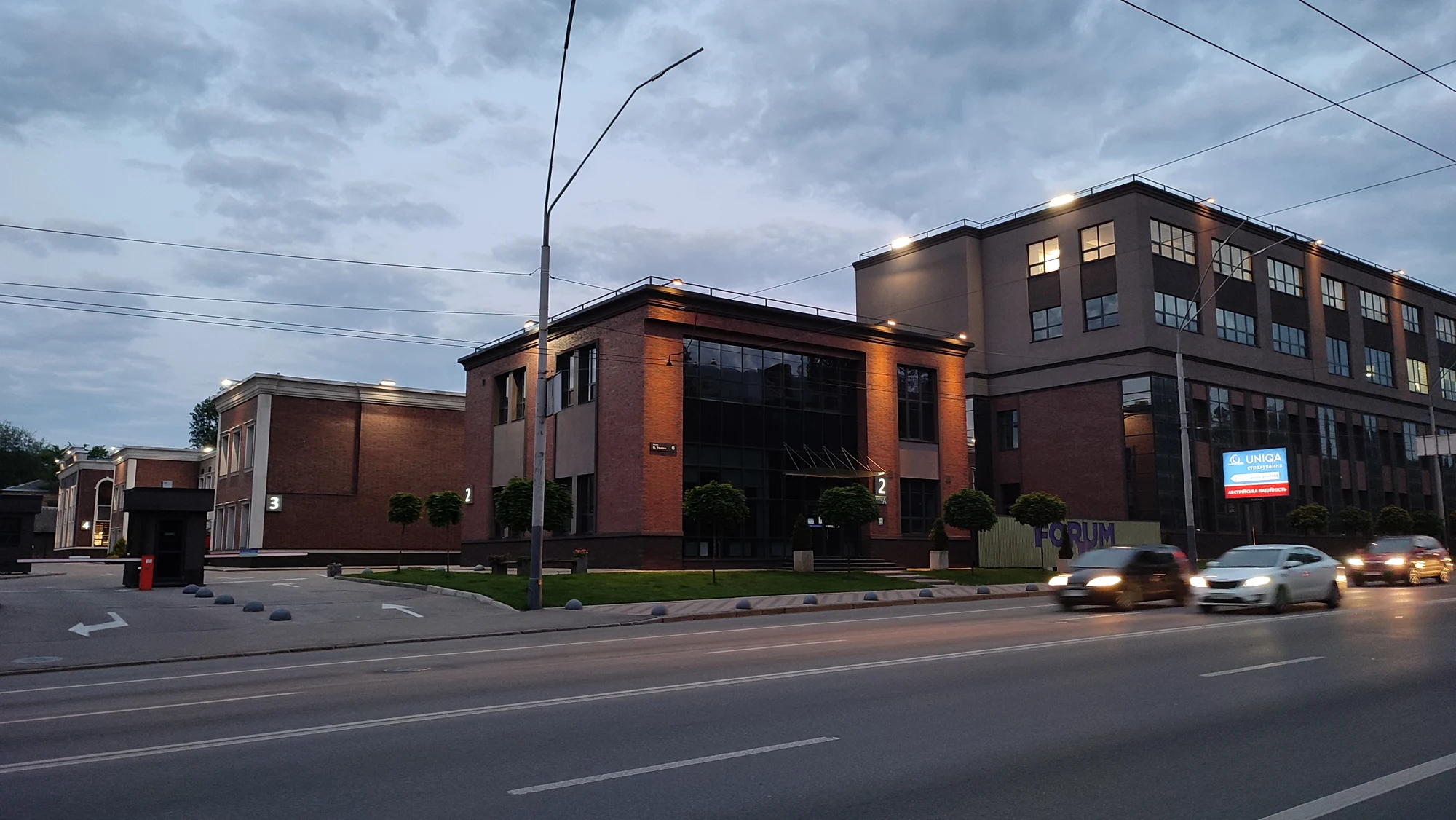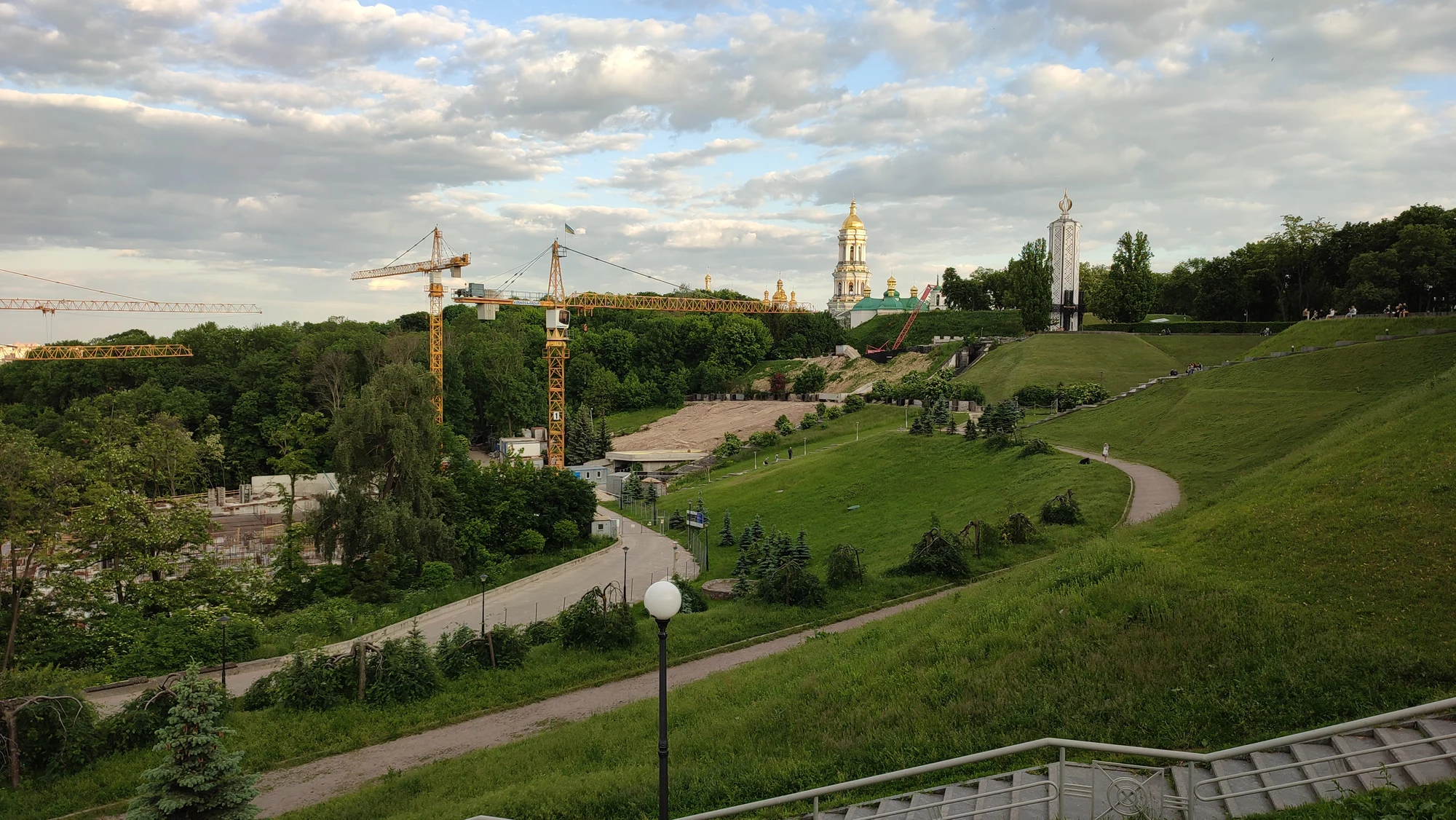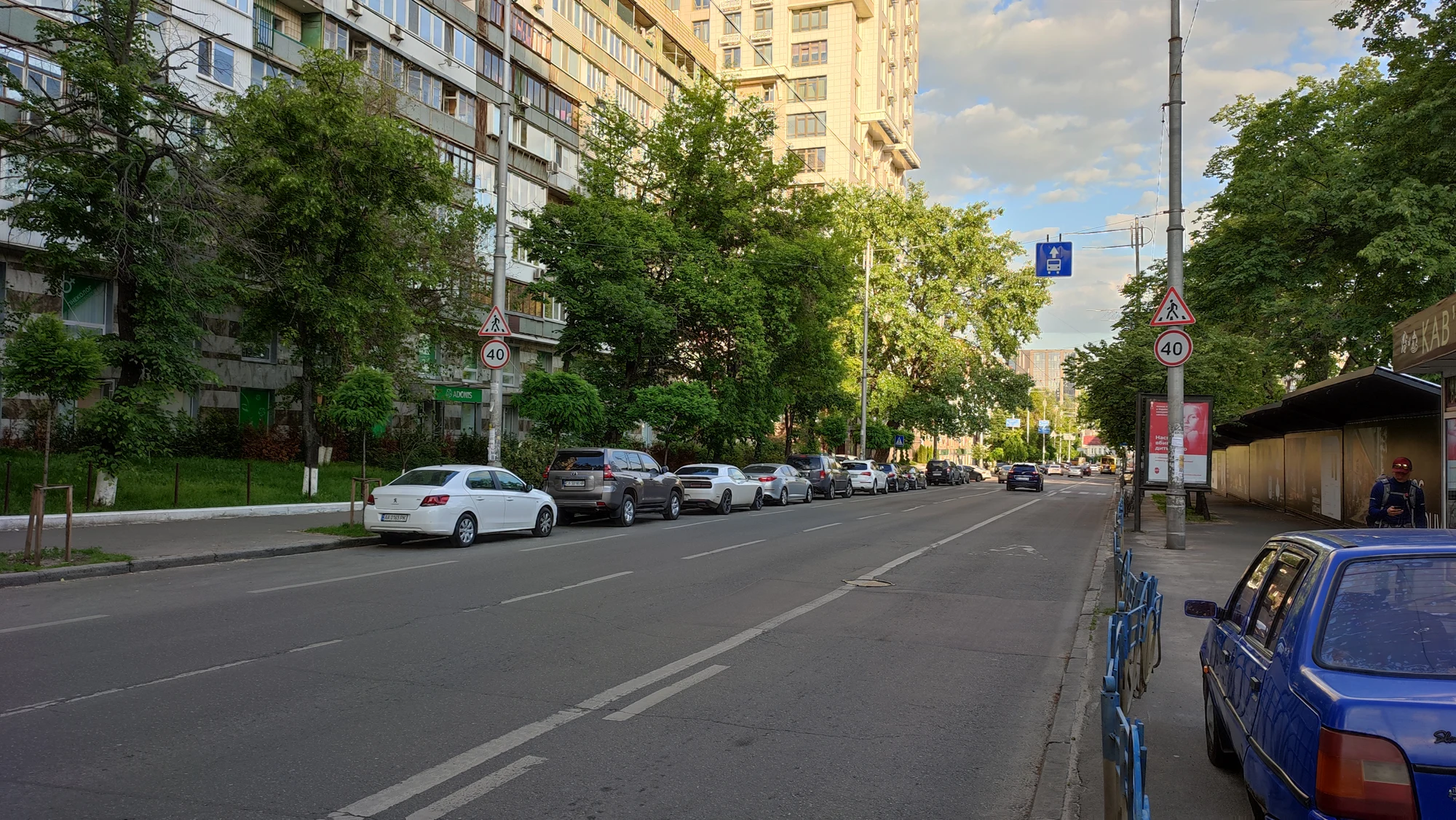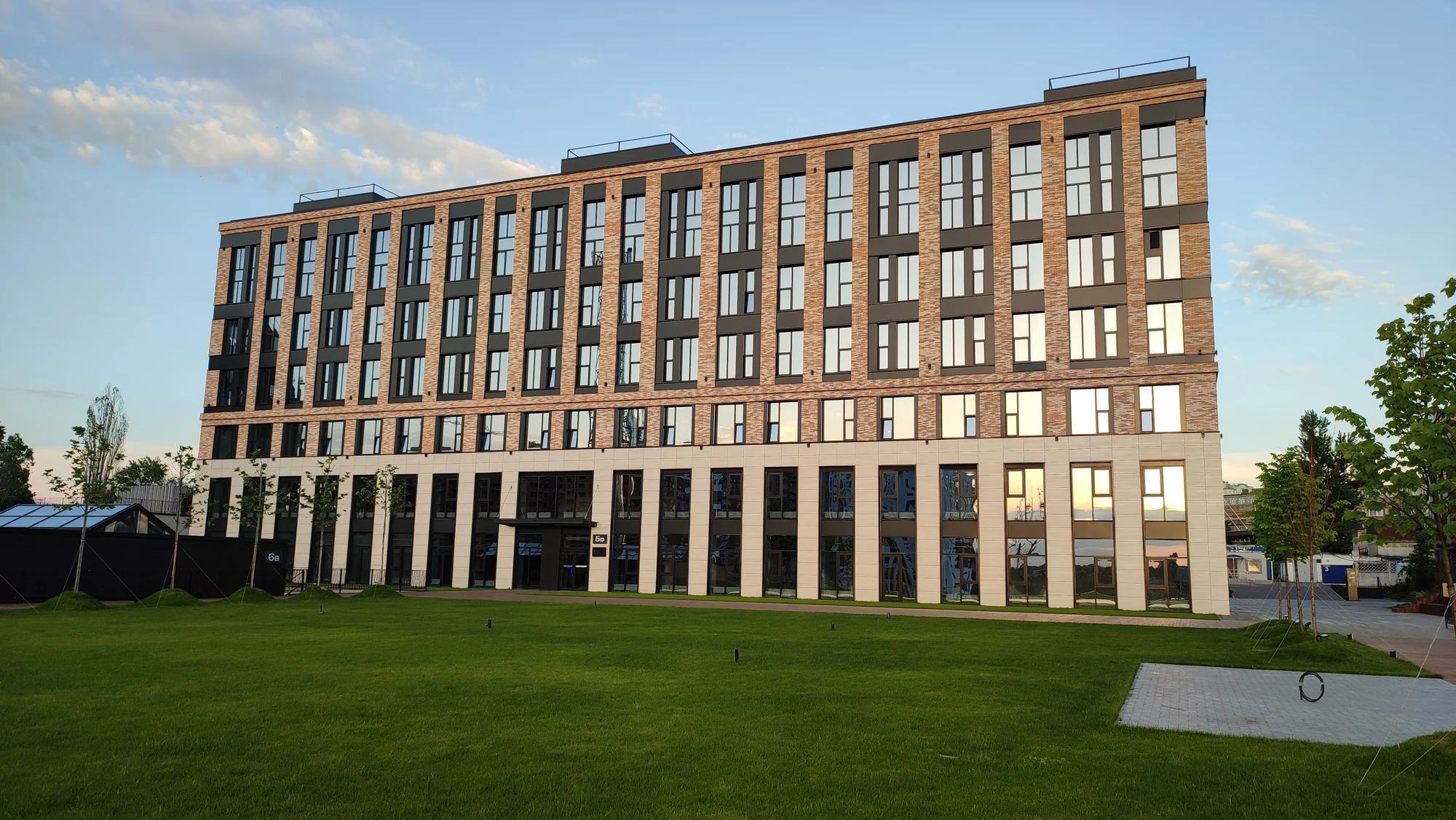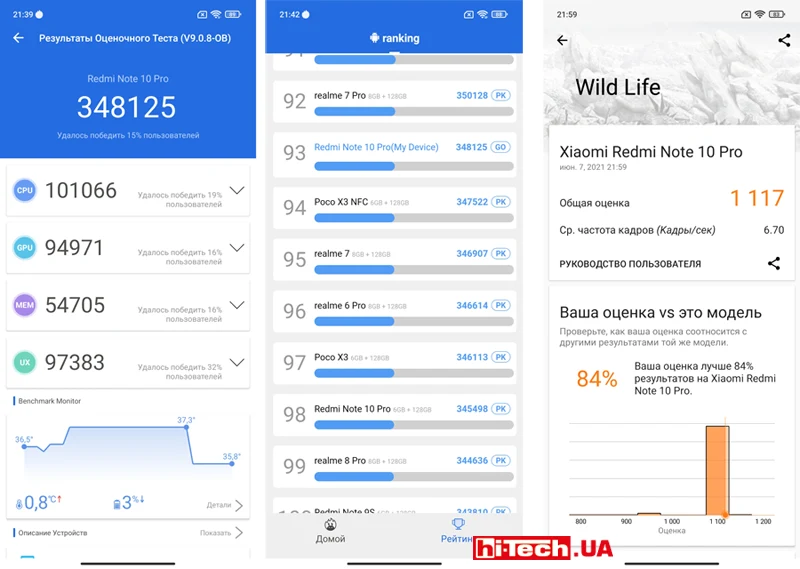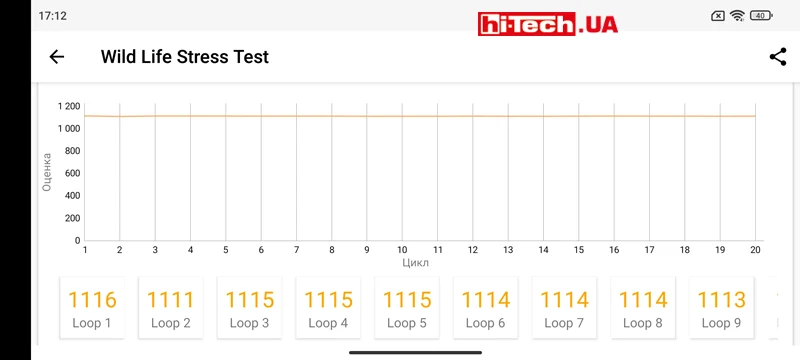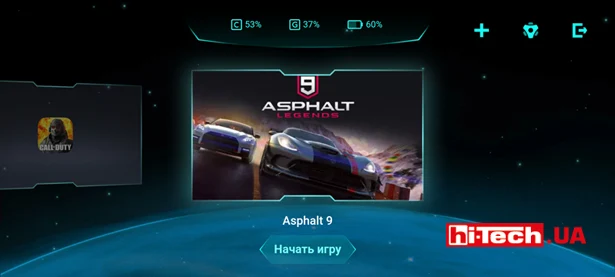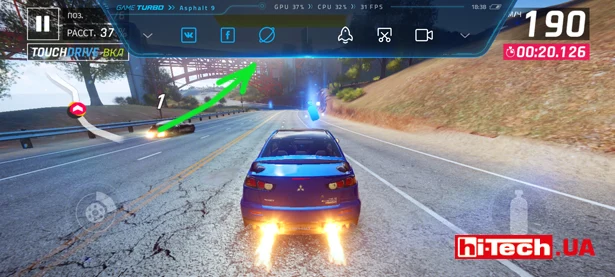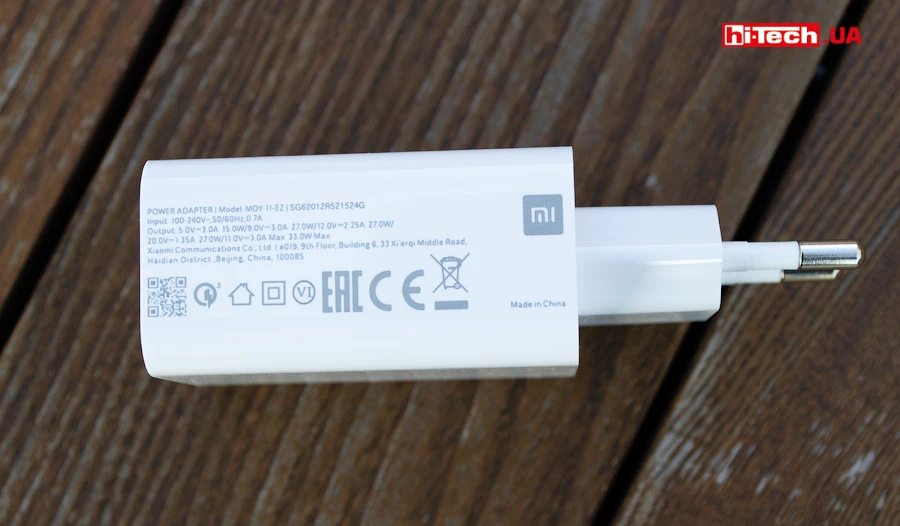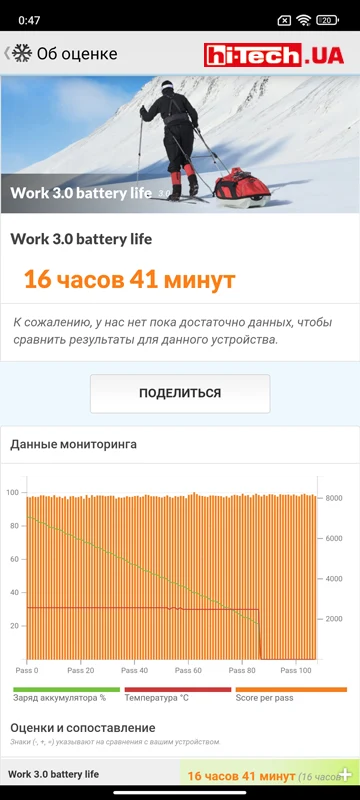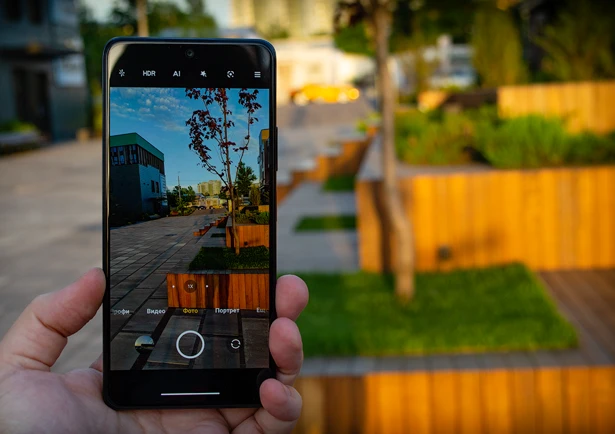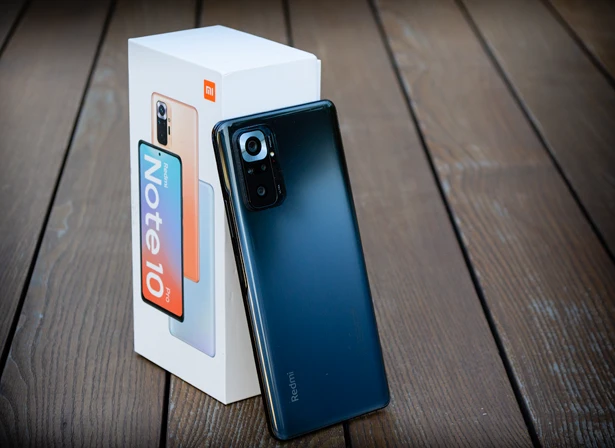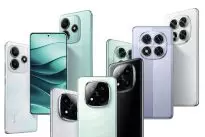Review of the Xiaomi Redmi Note 10 Pro smartphone. Is it people’s choice in the middle class?
18.06.21
Even when you look at the characteristics, it is clear that the Xiaomi Redmi Note 10 Pro, which appeared relatively recently, has every chance of becoming the next super popular model in the Redmi Note line.
An AMOLED screen with a frequency of 120 Hz, a 108-megapixel main camera, glass on the rear panel, stereo speakers – such features are usually boasted by smartphones in higher price categories.
How does all this work in practice, are there any unpleasant shortcomings? Let’s look into our Xiaomi Redmi Note 10 Pro test.
External inspection and equipment
The Xiaomi Redmi Note 10 Pro smartphone turned out to be large. But this is not surprising, given that the screen has a diagonal of 6.67”.
Among many other mid-range devices, the Note 10 Pro stands out with its glass back panel. ![]() Usually simpler materials are used – plastic.
Usually simpler materials are used – plastic.
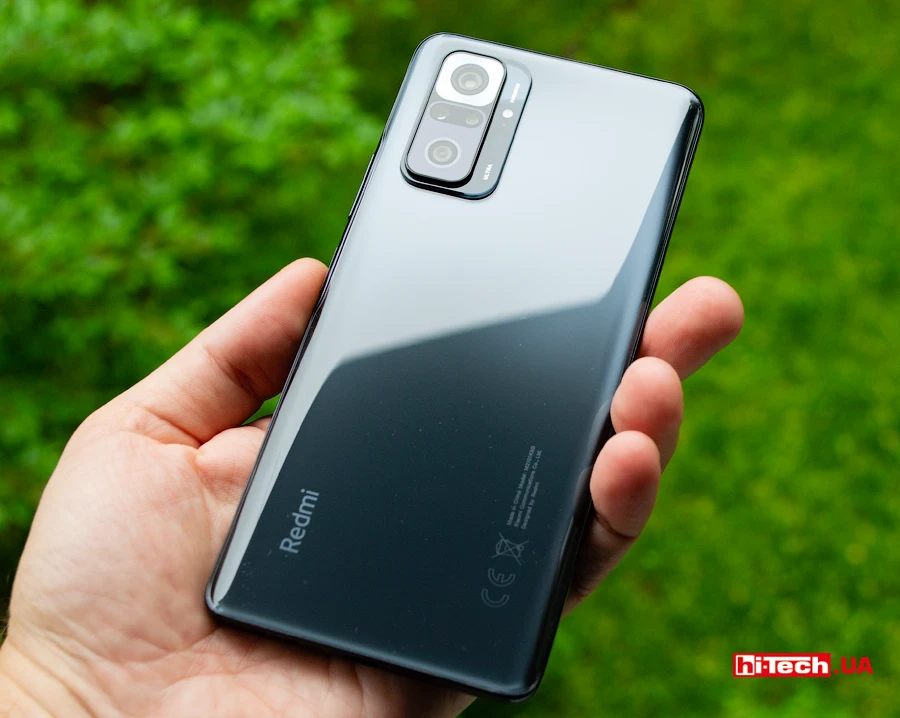
But the frame is plastic. It would be arrogance to rely on metal.
Even if you look closely at the details, it will be difficult to find any flaws in the assembly. The device is made at the highest level.
The model is available in three colors. We got the most common gray option (Onyx Gray), and there are also orange (Gradient Bronze) and white-blue (Glacier Blue).
The differences are not only in color. The gray Redmi Note 10 Pro has a glossy back glass, while the orange and white-oboe have a matte back glass.
I would call the matte finish more trendy and interesting, but this is a matter of taste. In addition, it is also more practical (fingerprints are less noticeable).
The back looks different depending on the lighting. ![]()
![]() Sometimes it has a monochromatic color, and when the light hits it, a very interesting silver-gray gradient overflow appears.
Sometimes it has a monochromatic color, and when the light hits it, a very interesting silver-gray gradient overflow appears.
The rear module with cameras protrudes very far beyond the body. ![]() It is clear that this is due to the large sensor of the main camera and the optics for it, but the manufacturer made it in the form of a double step.
It is clear that this is due to the large sensor of the main camera and the optics for it, but the manufacturer made it in the form of a double step.
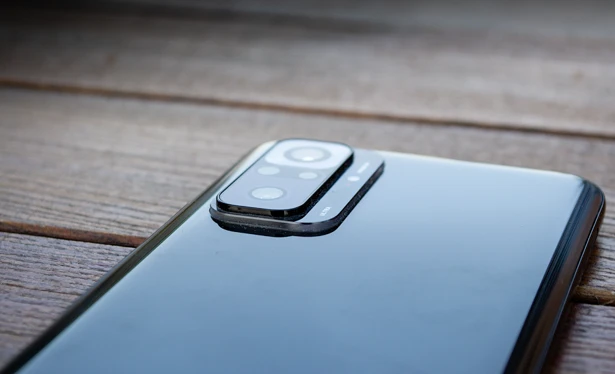
A controversial decision in my opinion.
In addition, thisprotrusion simply becomes a magnet for fabric fluff and dust. You won’t be able to wipe off the dust by swiping a cloth a couple of times because of the rather sharp edges.
The screen occupies almost the entire front panel. ![]() It is flat, which adds convenience when using it.
It is flat, which adds convenience when using it.
By the way, now there is a return to flat screens. Practicality nevertheless “won” the spectacular appearance, and now even top-end smartphones often use flat screens, without the previously fashionable curves on the edges.
The selfie camera was installed in a small cutout under the earpiece.
On the right side there is a power button with a built-in fingerprint sensor and a volume rocker.
By the way, fingerprint recognition occurs simply instantly. Personally, I find the button sensor option more convenient compared to an under-screen sensor.
The only complaint in this regard about the Xiaomi Redmi Note 10 Pro is that the power button is not recessed or elevated. Because of this, it is not always possible to get your finger on the sensor the first time.
On the left side there is only a tray for SIM cards and unit cards. By the way, thistray allows you to install two SIM cards and a MicroSD memory card at the same time.
It’s nice that the trend of removing the 3.5mm headphone jack hasn’t made its way to the Note 10 Pro. There is such a connector here.
And the manufacturer has not forgotten about the IR transmitter for controlling various home appliances.
Sound speakers are located on both the top and bottom edges.
There is no support for wireless charging in Redmi Note 10 Pro.

The factory equipment includes some nice bonuses. The smartphone comes with a translucent case, and a protective film is already glued to the screen.
By the way, when the device is used with this case, the power button becomes recessed and it becomes much easier to find by touch.
Personally, I’m used to additional information LEDs on smartphones. This is very convenient and allows you to quickly and remotely understand the charging status of the device and information about received notifications. Unfortunately, Xiaomi Redmi Note 10 Pro does not have such a feature.
IP53 dust and splash protection is declared (this is simpler protection compared to IP67, IP68).
Screen
The screen of Xiaomi Redmi Note 10 Pro is one of its main advantages.
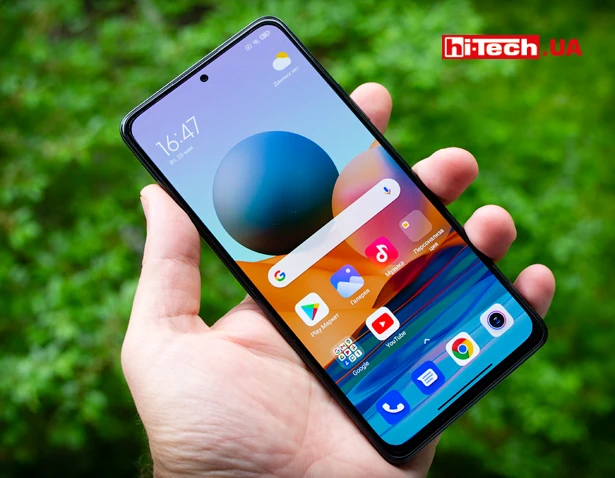
There is an AMOLED panel with a diagonal of 6.67” and a resolution of 2400×1080 pixels. (ratio 20:9).
Supports DCI-P3 extended color range, HDR 10 technology and a maximum frequency of 120 Hz.
And all this is also complemented by a fairly high maximum brightness of 700 nits (1200 nits peak).
Yes, screens of this level are usually installed only in models of higher price categories.
The original film does not have an oleophobic coating. I suspect that there is this coating on the screen itself (I did not remove the film).
The display is very bright in practice and shows an excellent picture with wide viewing angles.
The need for 120 Hz can be debated, but it’s truly a thrill to see how smooth and responsive manipulation of elements on the screen becomes.
In the settings you can select 60 or 120 Hz. There is no automatic frequency adjustment mode, like in many other smartphones.
You can experience the delights of HDR, for example, by watching special HDR-compatible videos on YouTube. In the playback quality settings (on YouTube), a special designation even appears.
There is a reading mode, you can adjust the color temperature, adjust the saturation. All in all, a pretty standard modern set.
But there is no setting for separately enabling DC Dimming (flicker-free backlight without PWM modulation).
Apparently, the smartphone screen constantly works in this mode. Perhaps with the devices it will be possible to find some percentage of PWM modulation, but in operation the flickering characteristic of many AMOLED displays is completely unnoticeable. Moreover, I specifically viewed it at different brightness levels and at different screen refresh rates.
AMOLED screens allow you to implement the Always On Display function, but the manufacturer did not add it to Redmi Note 10 Pro.
Instead, there is some analogue called an “active screen”.
After touching the screen, an element with a clock and information about received notifications smoothly appears. This is probably a good option for night use.
The difference from Always On Display is that the element appears for only 10 seconds.
If necessary, in the settings you can set the screen to “wake up” by double tapping.
MIUI 12.5 proprietary shell
The Xiaomi Redmi Note 10 Pro smartphone at the time of writing was running the Android 11 operating system and received firmware with the proprietary interface updated to MIUI 12.5.
The innovations of MIUI 12.5 compared to MIUI 12 are not drastic and many may not notice them.
For example, you can now use Skype to switch between notifications and settings buttons in the drop-down curtain.
Windows of open applications can be organized not only in tiled order, but also in the form of a scroll bar.
Advanced Super Wallpaper has been added, but it should be noted that our Xiaomi Redmi Note 10 Pro does not have this function out of the box. But, judging by the reviews on the forums, the function can be installed manually.
Overall, MIUI 12.5 leaves a good impression. After a couple of weeks of use, everything worked stably and smoothly.
I like that MIUI 12.5 does not try to impose any of its own rules on the user, and provides a choice.
For example, application shortcuts can be placed on desktops or called up from a separate menu.
The drop-down curtain can have a design with buttons at the top and notifications at the bottom (as was previously the case) or a new option where buttons and notifications are separated in separate curtains.
To control, you can use the traditional method with separate buttons or enable the mode with gesture control (as in the iPhone).
As mentioned, there are various options available for organizing minimized applications.
I don’t like the cutout for the selfie camera – it can be hidden.
Many people really liked the call recording function in Xiaomi smartphones, but in modern models of global versions this function disappears.
The Xiaomi Redmi Note 10 Pro (European version) presented in the test does not have a call recording function.
A sore point for many is advertising in the proprietary MIUI shell.
Yes, the Note 10 Pro presented in the test is not without this drawback. If desired, advertising, of course, can be removed. But you will have to spend some time until you find in the settings all the items in different parts of the menu that are responsible for turning off advertising.
I liked that you can quickly call up various functions (flashlight, camera, calculator, etc.) by double-tapping the power button.
When the screen is off, incoming notifications may be indicated by special effects.
Cameras and filming
The camera block on the rear panel looks very impressive.
You can immediately notice four lens eyes, a flash and a unit with various sensors.
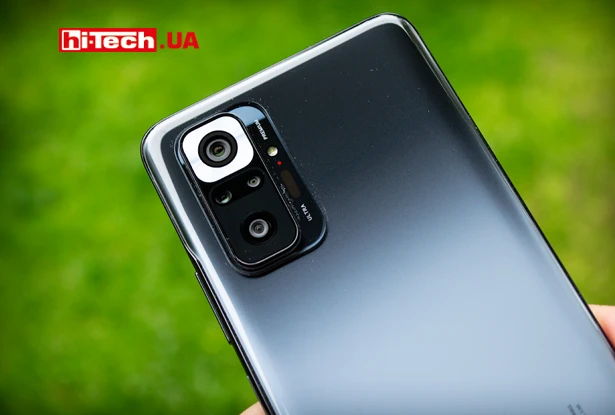
Let’s list the cameras on the rear panel.
- Main 108-megapixel camera with wide viewing angle. A rather large (this is good) Samsung ISOCELL HM2 sensor is installed and has a standard size of 1/1.52”. It is complemented by a lens with aperture F: 1.9. There is no optical stabilization.
- Additional 8-megapixel ultra-wide-angle camera (Sony IMX355 sensor). Lens with aperture F: 2.2.
- Separate 5-megapixel macro camera.
- Separate depth sensor for artificial background blur effects (portrait photography).
Selfie camera – 16 megapixel.
A resolution of 108 megapixels and a fairly large sensor of the main camera are very good makings for high-quality photography.
Yes, the Xiaomi Redmi Note 10 Pro takes pictures, in general, very decently, but you have to understand that it doesn’t reach the level of high-end smartphones. Still, manufacturers leave a gap so that it makes sense to buy more expensive models.
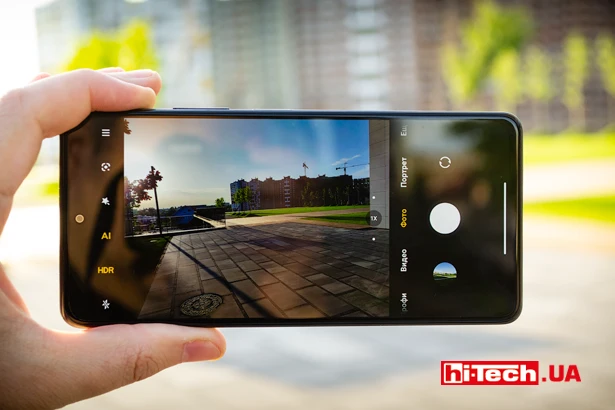
The Note 10 Pro is inferior to flagships when shooting in low light and when recording video.
Xiaomi Redmi Note 10 Pro does not support optical image stabilization. This is a common feature of all smartphones in this price category.
4K video recording is available, but only at 30 fps.
It’s quite strange that electronic stabilization cannot be enabled in 1080p60 and 4K modes. It is only available for 1080p30 video recording.
When shooting with the main 108-megapixel camera, pixels are combined into groups of 9 and the output is a 12-megapixel frame. This is a common fusion technology in high-megapixel sensors for smartphones.
If desired, you can get a 108-megapixel photo. There is a separate setting for this in the menu, but you shouldn’t expect any significant increase in detail. This is partly due to the limited capabilities of the lens, but it is also due to the phenomenon of diffraction. Smartphone sensors are too small for this resolution.
I didn’t find any new-fangled effects related to augmented reality, like AR Emoji, in the Xiaomi Redmi Note 10 Pro.
At the same time, the functionality of the shooting mode is still very wide, as for a device of this class. You can experiment for quite a long time with numerous settings and menu items.
There is a separate mode with manual settings for adjusting shutter speed, making exposure compensation, adjusting ISO, focusing control, etc.
Shooting in RAW format is also available, which will really appeal to enthusiasts.
In smartphones, the main camera usually takes much better pictures than the secondary one, and the Redmi Note 10 Pro is no exception in this regard.
The difference will become more noticeable as lighting conditions worsen.
I recommend that, whenever possible, you use primarily the main camera for both photos and video.
The viewing angles between the main and additional ultra-wide angles differ very noticeably. This is good.
Comparison of the main camera and ultra-wide-angle
There is no telephoto camera in the smartphone. The zoom is only digital, so you shouldn’t make a big bet on zoom.
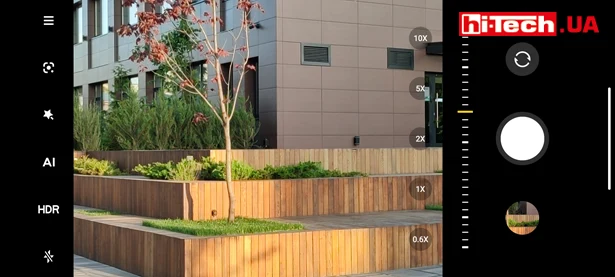
Examples of shooting with zoom 0.6x (ultra-wide-angle camera), 1x (main camera) and digital zoom 2x, 5x, 10x
- 0,6x
- 1x
- 2x
- 5x
- 10x
- 0,6x
- 1x
- 2x
- 5x
- 10x
Although electronic stabilization is not available for 4K videos, the video quality in this mode greatly exceeds Full HD video in terms of detail. Not every smartphone has such striking differences.
The performance of the separate macro camera was very impressive.
- Тетрадная клетка с шагом в 5 мм
- Часть циферблата наручных часов, размер окошка с датой где-то 3 мм
- Линейка с миллиметровыми делениями
- Надпись на 500-гривневой купюре, для интереса попробуйте найти ее самостоятельно
- А вот, что находится внутри ноля в цифре 500 на 500-гривневой купюре
Frankly, I didn’t even expect such a great result.
Gallery with sample images
Performance, heating
The smartphone is based on the Qualcomm Snapdragon 732G processor, made using an 8-nanometer process technology.
It is a slightly improved version of the Snapdragon 720G processor.
Of course, it doesn’t lay claim to any performance records, but it is a solid and popular option for mid-range smartphones.
In combination with 6 GB of RAM at the moment, its performance will be sufficient even for modern demanding games.

Even with high graphics settings, a comfortable FPS level was ensured in the games Asphalt 9 and Call of Duty: Mobile.
The Xiaomi Redmi Note 10 Pro smartphone showed adequate results for the platform used in the 3DMark Wild Life and AnTutu Benchmark tests.
Some reviews indicate that under prolonged load, the Redmi Note 10 Pro begins to throttle and performance drops.
I checked this point separately.
20 runs of 3DMark Wild Life in a row did not reveal any deviations in the results. The device consistently produced about 1115 points over and over again.
I also ran AnTutu Benchmark several times in a row and got the following results: 351364, 349705, 344528, 348125 points. Very close values.
It turns out that I didn’t find any throttling in my tests.
During prolonged use under load in games, the processor temperature reached approximately 60 °C, but was often even lower. This is a completely acceptable value. It was felt that the case was heating up, but I wouldn’t say that it was getting hot.
This does not cause any discomfort.
During charging, the battery did not even heat up to 40 °C, judging by the sensor readings.
Games can be added to a special “game accelerator”. At the same time, some optimization of the smartphone’s resources occurs, which theoretically can improve the gameplay (clearing memory, closing applications, etc.).
In the games themselves, an additional panel appears (called by clicking on a special small element in the corner of the screen) on which information about the loading of the graphics core, CPU, and FPS level is visible. You can also enable screen recording, clear memory, etc.
Battery and charging
In terms of the built-in battery capacity of 5020 mAh Xiaomi Redmi Note 10 Pro is among the leaders in its class. This is a very decent value.
The kit comes with a charger with a power of up to 33 W.
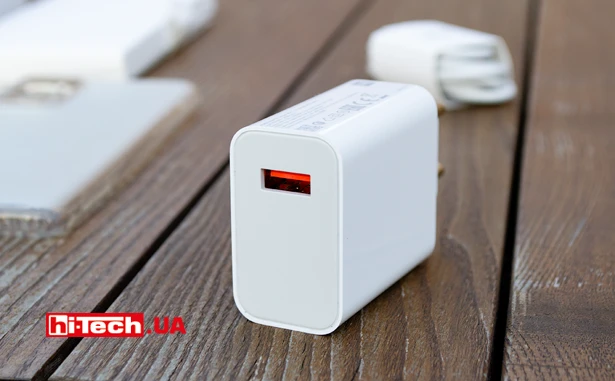
I will share some observations regarding charging speed.
It took 27 minutes to increase the battery charge from 5 to 52%. From 5 to 80% – 45 minutes.
And from 5 to 100% – 1 hour and 12 minutes.
Overall, not bad.
If the phone detects a compatible high-speed storage device, a corresponding notification is displayed on the screen.
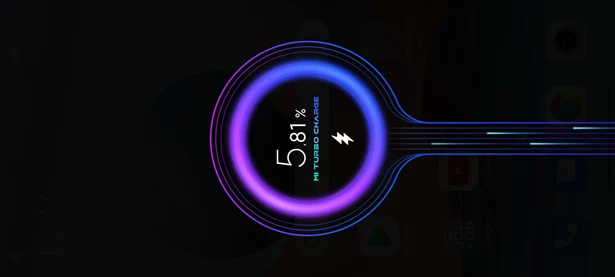
In the PCMark Work 3.0 test, which simulates a certain load with the screen always on, the smartphone provided 16 hours and 41 minutes of battery life. The brightness was set to approximately 30%, the screen frequency was 60 Hz.
Just for fun, I also checked the battery life during continuous playback of Full HD videos on YouTube. The brightness was also set to 30%.
With such a load, autonomy turned out to be even higher and Xiaomi Redmi Note 10 Pro was able to work for 21 hours
In my opinion these are excellent results.
In actual use, battery life depends on how often you take the smartphone out of your hands and what apps you use. If desired, it can be planted in a day.
If the smartphone is used moderately, the charge will last for several days.
Sound
Stereo speakers are still a very atypical feature for mid-range smartphones, although Xiaomi is gradually making people get used to it with their new products.
In Redmi Note 10 Pro, stereo speakers are located on the bottom and top edges.
The playback volume is high. But at maximum levels, I would say that playback occurs with some strain.
I also discovered that the speakers do not play identically. The lower one turned out to be a little more bassy.
In general, if you want, there is something to complain about.
When using headphones, there is a good volume reserve (I used regular low-impedance headphones).
The earpiece was also quite loud. I even had to significantly limit the level, which I usually don’t do in other smartphones.
Strange nuances
The smartphone does not have a conventional proximity sensor to turn off the screen during phone calls.
According to unconfirmed reports, its functions are implemented in Xiaomi Redmi Note 10 Pro based on an accelerometer/gyroscope and possibly other sensors.
As a result, there are certain problems with the quality of implementation of such a simple function, which has been noted by some reviewers and discussed on forums.
But the situation is often overdramatized. Yes, it happened to me that the screen remained on when I held the device to my ear and it happened that, on the contrary, it did not turn on automatically when I had to press the call reset button.
But this happened infrequently, and it does not cause big problems.
Another point is that when you tap your fingers on the top of the case, you can notice that something is rattling inside. The sound is quiet, but you can feel it if you listen closely. This sometimes happens in smartphones where the cameras have optical stabilization, but it is not in the Redmi Note 10 Pro.
This doesn’t affect anything, but it’s an interesting nuance.
Conclusions
Assessing the capabilities and features of Xiaomi Redmi Note 10 Pro, we can say that the company has once again managed to prepare a very cool middle-class model, which has every chance of becoming another hit.
Cool screen, capacious battery, interesting camera, stereo speakers, glass on the back. And the manufacturer “did not forget” about such additional bonuses as a radio, an IR transmitter, a 3.5 mm headphone jack, a full-fledged tray for SIM cards and memory cards (NFC is also available).
There are also some disadvantages. These can be taken into account, but they are unlikely to significantly affect the overall very positive assessment of the device.
Among smartphones from other brands not affiliated with Xiaomi, comparable devices are not so easy to find.
Competitors, as a rule, turn out to be either more expensive or inferior in certain characteristics (screen, battery capacity, glass back).
For example, the new realme 8 Pro cannot boast of a 120 Hz screen, is slightly inferior in processor, and has a simpler body.
Samsung Galaxy A52 has optical stabilization and IP67 protection, but in a number of other ways it is slightly weaker and more expensive.
Perhaps the biggest competition for the Redmi Note 10 Pro comes from other products from Xiaomi itself and its sub-brands.
Such as Poco X3 NFC, Poco X3 Pro, Xiaomi Mi 11 Lite, Xiaomi Mi 10T Lite.
A good “rival” is the Poco X3 NFC. In many ways, its characteristics are comparable, but the screen is IPS, not AMOLED, and the body is plastic without a glass back.
The Redmi Note 10 Pro feels more premium in comparison, but the Poco X3 NFC is significantly cheaper.
Key characteristics of Xiaomi Redmi Note 10 Pro (M2101K6G)
| Screen | 6.67″, 20:9, AMOLED |
| Screen resolution | 2400×1080 pixels |
| Maximum screen frequency | 120 Hz |
| Operating system | Android 11 + MIUI 12.5 |
| Rear cameras | 108 megapixels. (main), 8 megapixels. (ultra-wide-angle), 5 megapixels (macro), depth of field sensor |
| Selfie camera | 16 megapixels. |
| Processor | Qualcomm Snapdragon 732G |
| RAM capacity | 6 GB (LPDDR4X) |
| Built-in memory | 128 GB |
| Fingerprint sensor location | built into the power button |
| Card reader | microSD |
| Dual SIM support | yes |
| Interfaces | Bluetooth 5.1, USB 2.0, Wi-Fi 2.4/5 GHz |
| NFC support | yes |
| GPS receiver/gyrosensor/light sensor | yes/yes/yes |
| FM radio/IR transmitter | yes/yes |
| Headphone/headset jack | yes |
| Battery capacity | 5020 mAh |
| Case materials | plastic + glass back panel |
| Dimensions | 164×76×8.1 mm |
| Weight | 193 g |
| Additional features | IP53 protection |
| Supplier | Xiaomi representative |
| Price of version with memory 6+128 GB | 9000UAH ($330) |
Rating:
+ magnificent screen with support for 120 Hz frequency
+ battery life
+ camera mode functionality
+ impressive macro photography
+ bumper case included and “factory” protective film on the screen
+ stereo speakers
+ good additional equipment (FM radio, IR transmitter, headphone jack)
+ glass back panel (untypical for devices of this class)
+ slot supports installation of two SIM cards and a memory card at the same time
+ declared protection against splashes and dust IP53
– electronic image stabilization is not available for 4K and 1080@60 video recordings
– no full Always On function
– advertising (removable) in the interface
– something rattles in the upper part of the case (almost imperceptibly)
– operation of a “virtual” proximity sensor
Engineer of the Test Laboratory
Don't miss interesting news
Subscribe to our channels and read announcements of high-tech news, tes
Logitech G Powerplay 2 wireless charging pad review
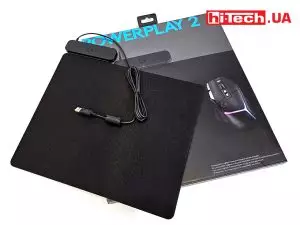
Logitech has great wireless mice, and there’s also the G Powerplay 2 wireless charging mat that will keep them charged right while you’re using them.
Neuralink will release the Blindsight chip, which will restore sight to the blind development Elon Musk medicine
Elon Musk has confirmed that the company is preparing to test a new Blindsight implant, designed to restore vision to blind people in low resolution.
Aston Martin and Curv Racing Simulators unveil $75,000 AMR-C01-R car simulator car games
The simulator’s design is based on a carbon monocoque and includes Aston Martin’s signature grilles

